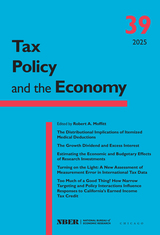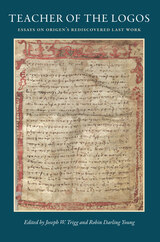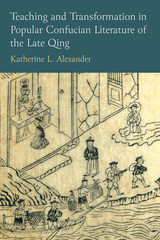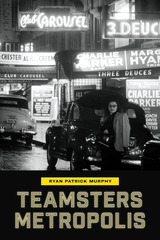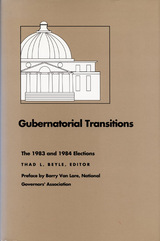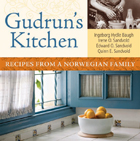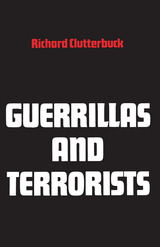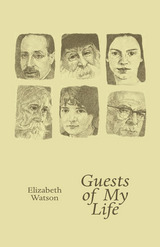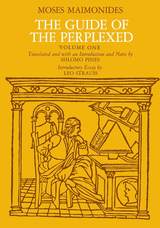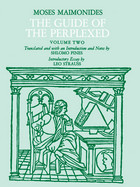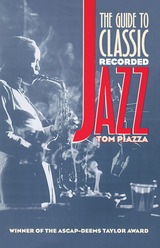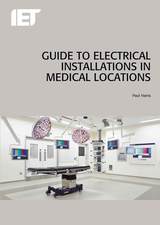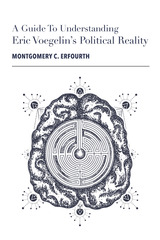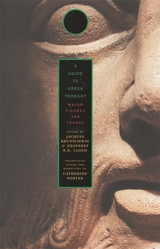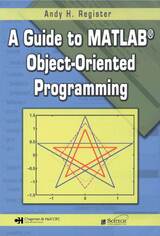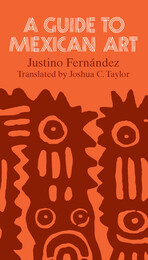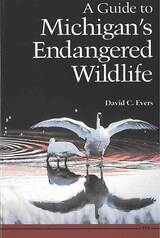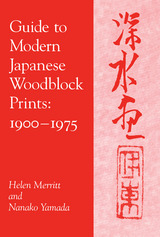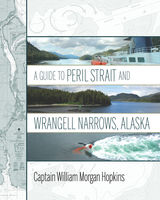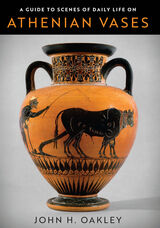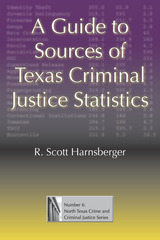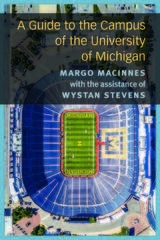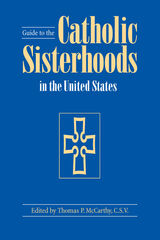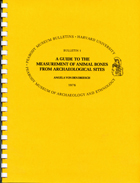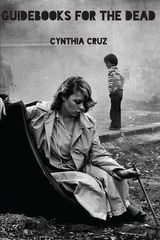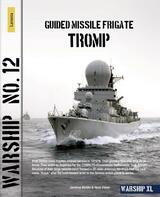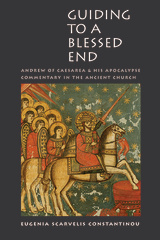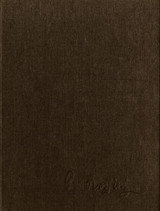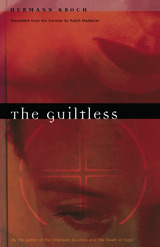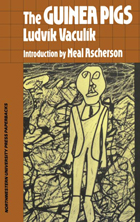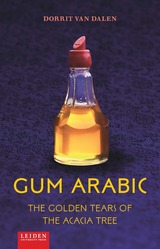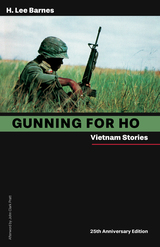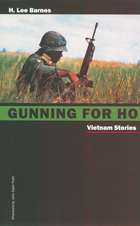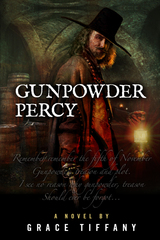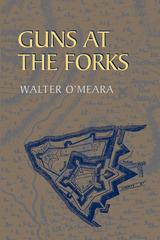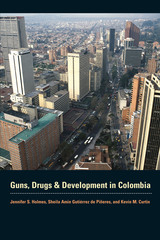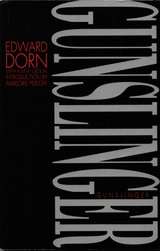 Guarding the Frontier: A Study of Frontier Defense, 1815-1825
Edgar Bruce Wesley
University of Minnesota Press, 1935 Guarding the Frontier was first published in 1935. Minnesota Archive Editions uses digital technology to make long-unavailable books once again accessible, and are published unaltered from the original University of Minnesota Press editions. "For almost a century the defense of the frontier was the chief consideration in the military policy of the United States," Dr. Wesley observes. His book is the first detailed historical study of the military policy of the United States in the years immediately following the War of 1812, the period during which its policy was becoming clearly defined. The political, military, and economic factors lying behind the establishment of that policy are all given thorough treatment by the author, who discusses the various methods of defense evolved against the British to the north, the Spaniards in the south and west, and the Indians everywhere. The author demonstrates the importance of Indian affairs, of the factory system, and of the fur trade as elements in the westward expansion of the United States.
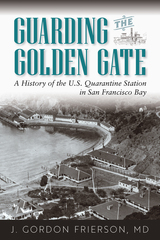 Guarding the Golden Gate: A History of the U.S. Quarantine Station in San Francisco Bay
J. Gordon Frierson, MD
University of Nevada Press, 2022 As a major seaport, San Francisco had for decades struggled to control infectious diseases carried by passengers on ships entering the port. In 1882, a steamer from Hong Kong arrived carrying over 800 Chinese passengers, including one who had smallpox. The steamer was held in quarantine for weeks, during which time more passengers on board the ship contracted the disease. This episode convinced port authorities that better means of quarantining infected ship arrivals were necessary.
Guarding the Golden Gate covers not only the creation and operation of the station, which is integral to San Francisco’s history, but also discusses the challenges of life on Angel Island—a small, exposed, and nearly waterless landmass on the north side of the Bay. The book reveals the steps taken to prevent the spread of diseases not only into the United States but also into other ports visited by ships leaving San Francisco; the political struggles over the establishment of a national quarantine station; and the day-to-day life of the immigrants and staff inhabiting the island. With the advancement of the understanding of infectious diseases and the development of treatments, the quarantine station’s activities declined in the 1930s, and the facility ultimately shuttered its doors in 1949.
While Angel Island is now a California state park, it remains as a testament to an influential period in the nation’s history that offers rich insights into efforts to maintain the public’s safety during health crises.
Guatemala: Past and Present
Chester Lloyd Jones
University of Minnesota Press, 1940
Guatemala was first published in 1940. Minnesota Archive Editions uses digital technology to make long-unavailable books once again accessible, and are published unaltered from the original University of Minnesota Press editions.
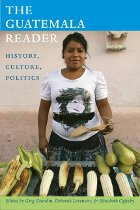 The Guatemala Reader: History, Culture, Politics
Greg Grandin, Deborah T. Levenson, and Elizabeth Oglesby, eds.
Duke University Press, 2011 This reader brings together more than 200 texts and images in a broad introduction to Guatemala's history, culture, and politics. In choosing the selections, the editors sought to avoid representing the country only in terms of its long experience of conflict, racism, and violence. And so, while offering many perspectives on that violence, this anthology portrays Guatemala as a real place where people experience joys and sorrows that cannot be reduced to the contretemps of resistance and repression. It includes not only the opinions of politicians, activists, and scholars, but also poems, songs, plays, jokes, novels, short stories, recipes, art, and photographs that capture the diversity of everyday life in Guatemala. The editors introduce all of the selections, from the first piece, an excerpt from the Popol Vuh, a mid-sixteenth-century text believed to be the single most important source documenting pre-Hispanic Maya culture, through the final selections, which explore contemporary Guatemala in relation to neoliberalism, multiculturalism, and the dynamics of migration to the United States and of immigrant life. Many pieces were originally published in Spanish, and most of those appear in English for the first time.
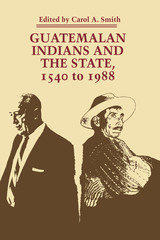 Guatemalan Indians and the State: 1540 to 1988
Edited by Carol A. Smith
University of Texas Press, 1990 Violence in Central America, especially when directed against Indian populations, is not a new phenomenon. Yet few studies of the region have focused specifi cally on the relationship between Indians and the state, a relationship that may hold the key to understanding these conflicts. In this volume, noted historians and anthropologists pool their considerable expertise to analyze the situation in Guatemala, working from the premise that the Indian/state relationship is the single most important determinant of Guatemala’s distinctive history and social order. In chapters by such respected scholars as Robert Cormack, Ralph Lee Woodward, Christopher Lutz, Richard Adams, and Arturo Arias, the history of Indian activism in Guatemala unfolds. The authors reveal that the insistence of Guatemalan Indians on maintaining their distinctive cultural practices and traditions in the face of state attempts to eradicate them appears to have fostered the development of an increasingly oppressive state. This historical insight into the forces that shaped modern Guatemala provides a context for understanding the extraordinary level of violence that enveloped the Indians of the western highlands in the 1980s, the continued massive assault on traditional religious and secular culture, the movement from a militarized state to a militarized civil society, and the major transformations taking place in Guatemala’s traditional export-oriented economy. In this sense, Guatemalan Indians and the State, 1540 to 1988 provides a revisionist social history of Guatemala.
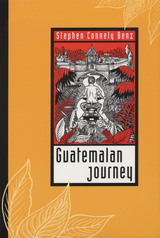 Guatemalan Journey
By Stephen Connely Benz
University of Texas Press, 1996 Guatemala draws some half million tourists each year, whose brief visits to the ruins of ancient Maya cities and contemporary highland Maya villages may give them only a partial and folkloric understanding of Guatemalan society. In this vividly written travel narrative, Stephen Connely Benz explores the Guatemala that casual travelers miss, using his encounters with ordinary Guatemalans at the mall, on the streets, at soccer games, and even at the funeral of massacre victims to illuminate the social reality of Guatemala today. The book opens with an extended section on the capital, Guatemala City, and then moves out to the more remote parts of the country where the Guatemalan Indians predominate. Benz offers us a series of intelligent and sometimes humorous perspectives on Guatemala's political history and the role of the military, the country's environmental degradation, the influence of foreign missionaries, and especially the impact of the United States on Guatemala, from governmental programs to fast food franchises.
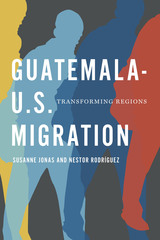 Guatemala-U.S. Migration: Transforming Regions
By Susanne Jonas and Nestor Rodríguez
University of Texas Press, 2015 Guatemala-U.S. Migration: Transforming Regions is a pioneering, comprehensive, and multifaceted study of Guatemalan migration to the United States from the late 1970s to the present. It analyzes this migration in a regional context including Guatemala, Mexico, and the United States. This book illuminates the perilous passage through Mexico for Guatemalan migrants, as well as their settlement in various U.S. venues. Moreover, it builds on existing theoretical frameworks and breaks new ground by analyzing the construction and transformations of this migration region and transregional dimensions of migration. Seamlessly blending multiple sociological perspectives, this book addresses the experiences of both Maya and ladino Guatemalan migrants, incorporating gendered as well as ethnic and class dimensions of migration. It spans the most violent years of the civil war and the postwar years in Guatemala, hence including both refugees and labor migrants. The demographic chapter delineates five phases of Guatemalan migration to the United States since the late 1970s, with immigrants experiencing both inclusion and exclusion very dramatically during the most recent phase, in the early twenty-first century. This book also features an innovative study of Guatemalan migrant rights organizing in the United States and transregionally in Guatemala/Central America and Mexico. The two contrasting in-depth case studies of Guatemalan communities in Houston and San Francisco elaborate in vibrant detail the everyday experiences and evolving stories of the immigrants’ lives.
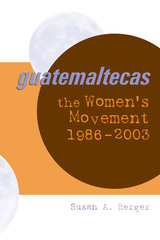 Guatemaltecas: The Women's Movement, 1986–2003
By Susan A. Berger
University of Texas Press, 2006 After thirty years of military rule and state-sponsored violence, Guatemala reinstated civilian control and began rebuilding democratic institutions in 1986. Responding to these changes, Guatemalan women began organizing to gain an active role in the national body politic and restructure traditional relations of power and gender. This pioneering study examines the formation and evolution of the Guatemalan women's movement and assesses how it has been affected by, and has in turn affected, the forces of democratization and globalization that have transformed much of the developing world. Susan Berger pursues three hypotheses in her study of the women's movement. She argues that neoliberal democratization has led to the institutionalization of the women's movement and has encouraged it to turn from protest politics to policy work and to helping the state impose its neoliberal agenda. She also asserts that, while the influences of dominant global discourses are apparent, local definitions of femininity, sexuality, and gender equity and rights have been critical to shaping the form, content, and objectives of the women's movement in Guatemala. And she identifies a counter-discourse to globalization that is slowly emerging within the movement. Berger's findings vigorously reveal the manifold complexities that have attended the development of the Guatemalan women's movement.
Gubernatorial Transitions: The 1983 and 1984 Elections
Thad L. Beyle, ed.
Duke University Press, 1989 Gubernatorial Transitions examines the processes by which power was transferred following the 1983 and 1984 gubernatorial elections in Kentucky, Missouri, North Carolina, North Dakota, Rhode Island, Utah, Washington, and West Virginia. It also discusses incumbent succession in Indiana and the role of lieutenant governors.
Gudrun’s Kitchen: Recipes from a Norwegian Family
Irene O. Sandvold
Wisconsin Historical Society Press, 2011 The youngest of a large Norwegian immigrant family, Gudrun Thue Sandvold was known for her beaming blue eyes and a reserve that gave way to laughter whenever she got together with her sisters. She took immeasurable pride in her children and grandchildren, kept an exquisite home, and turned the most mundane occasion into a party. And to all who knew her, Gudrun’s cooking was the stuff of legend. Part cookbook, part immigrant story, and part family memoir, Gudrun's Kitchen features hundreds of Gudrun Sandvold’s recipes for comfort food from a time when families and friends gathered at the table and connected with one another every single day. But this book is much more than a guide to Norwegian culinary traditions; it is an important contribution to immigrant history and a vital documentation of our nation’s multicultural heritage.
 Guernica and Total War
Ian Patterson
Harvard University Press, 2007 One of the most horrific innovations of the twentieth century was the deliberate strategy of total warfare--the obliteration of entire civilian populations. The first and in many ways the most striking use of this extreme measure came nearly 70 years ago when the ancient Basque hilltop town of Guernica was destroyed by the bombs of the German Condor.
Ian Patterson begins with a graphic account of what happened in Guernica on April 26, 1937, and its place in the course of the Spanish Civil War. This event focused the spotlight of media attention on the town of Guernica, and established Picasso's painting as the most famous modern image of the horrors of war. Yet Picasso's Guernica was only one of a huge number of cultural artifacts--paintings, films, novels, poems, plays--to explore the idea of indiscriminate death from the air. From the Blitz to Hiroshima to the destruction of the World Trade Center to daily carnage in Darfur and Iraq, war has been increasingly directed against civilians, who constitute an ever larger proportion of its casualties. Patterson explores how modern men and women respond to the threat of new warfare with new capacities for imagining aggression and death. An unflinching history of the locationless terror that so many people feel today, Guernica and Total War will engage anyone interested in the survival of cultures amid the disasters of war.
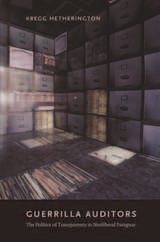 Guerrilla Auditors: The Politics of Transparency in Neoliberal Paraguay
Kregg Hetherington
Duke University Press, 2011 Guerrilla Auditors is an ethnographic account of the rise of information, transparency, and good governance in the post–Cold War era, and the effects of these concepts on Paraguay’s transition to democracy. Kregg Hetherington shows that the ideal of transparent information, meant to depoliticize bureaucratic procedures, has become a battleground for a new kind of politics centered on legal interpretation and the manipulation of official documents. In late-twentieth-century Paraguay, peasant land politics moved unexpectedly from the roads and fields into the documentary recesses of state bureaucracy. When peasants, bureaucrats, and development experts encountered one another in state archives, conflicts ensued about how bureaucracy ought to function, what documents are for, and who gets to narrate the past and the future of the nation. Hetherington argues that Paraguay’s neoliberal democracy is predicated, at least in part, on an exclusionary distinction between model citizens and peasants. Despite this, peasant activists have found ways to circumvent their exclusion and in so doing question the conceptual foundations of international development orthodoxy.
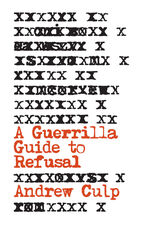 A Guerrilla Guide to Refusal
Andrew Culp
University of Minnesota Press, 2022 A field guide to a nonfascist life at the end of the world as we know it A Guerrilla Guide to Refusal is an unexpected approach to philosophy from a guerrilla-logic point of view. Harnessing critical theory to creatively reimagine counterinsurgency, guerrilla warfare, and interventions beyond the political mainstream, it takes us on a journey through anarchist infowar, queer outlaws, and black insurgency—through a subterranean network of communiques, military documents, contemporary art, political slogans, adversarial blogs, and captive media. In doing so, it provides powerful new insight into contemporary political movements that pose no demands, refuse labels, and offer no solutions. Written to both inspire and provoke, A Guerrilla Guide to Refusal urges us to think through the refusal to participate in politics as usual. Author Andrew Culp demonstrates how evasion can combatively deny the existing order its power. Focusing on punk cinema, anarchist pamphlets, feminist art projects, hacker manifestos, and guerrilla manuals, he foregrounds invisibility as a novel force of disruption. He draws on concepts of criminality, fugitivity, and anonymity to bring a more nuanced understanding of how power makes things—and people—visible. The book’s unique format is that of a theoretical manual, comprising freestanding segments instead of blueprints. Poised to reach beyond the academy into activist circles, this potent theory-in-action intervention forces us to reconsider the terrain upon which our struggles against patriarchy, anti-Blackness, capitalism, and the state operate.
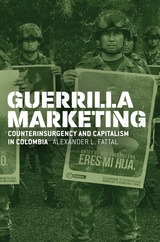 Guerrilla Marketing: Counterinsurgency and Capitalism in Colombia
Alexander L. Fattal
University of Chicago Press, 2018 Brand warfare is real. Guerrilla Marketing details the Colombian government’s efforts to transform Marxist guerrilla fighters in the FARC into consumer citizens. Alexander L. Fattal shows how the market has become one of the principal grounds on which counterinsurgency warfare is waged and postconflict futures are imagined in Colombia. This layered case study illuminates a larger phenomenon: the convergence of marketing and militarism in the twenty-first century. Taking a global view of information warfare, Guerrilla Marketing combines archival research and extensive fieldwork not just with the Colombian Ministry of Defense and former rebel communities, but also with political exiles in Sweden and peace negotiators in Havana. Throughout, Fattal deftly intertwines insights into the modern surveillance state, peace and conflict studies, and humanitarian interventions, on one hand, with critical engagements with marketing, consumer culture, and late capitalism on the other. The result is a powerful analysis of the intersection of conflict and consumerism in a world where governance is increasingly structured by brand ideology and wars sold as humanitarian interventions.
Full of rich, unforgettable ethnographic stories, Guerrilla Marketing is a stunning and troubling analysis of the mediation of global conflict.
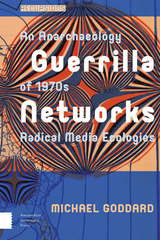 Guerrilla Networks: An Anarchaeology of 1970s Radical Media Ecologies
Michael Goddard
Amsterdam University Press, 2018 The radical youth movements of the 1960s and '70s gave rise to both militant political groups ranging from urban guerrilla groups to autonomist counterculture, as well as radical media, including radio, music, film, video, and television. This book is concerned with both of those tendencies considered as bifurcations of radical media ecologies in the 1970s. While some of the forms of media creativity and invention mapped here, such as militant film and video, pirate radio and guerrilla television, fit within conventional definitions of media, others, such as urban guerrilla groups and autonomous movements, do not. Nevertheless what was at stake in all these ventures was the use of available means of expression in order to produce transformative effects, and they were all in different ways responding to ideas and practices of guerrilla struggle and specifically of guerrilla media. This book examines these radical media ecologies as guerrilla networks, emphasising the proximity and inseparability of radical media and political practices.
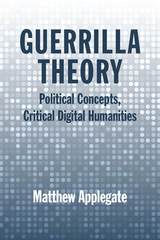 Guerrilla Theory: Political Concepts, Critical Digital Humanities
Matthew Applegate
Northwestern University Press, 2019 Guerrilla Theory examines the political, ontological, and technological underpinnings of the guerrilla in the digital humanities (DH). The figure of the guerrilla appears in digital humanities’ recent history as an agent of tactical reformation. It refers to a broad swath of disciplinary desires: digital humanities’ claim to collaborative and inclusive pedagogy, minimal and encrypted computing, and a host of minoritarian political interventions in its praxis, including queer politics, critical race studies, and feminist theory.
In this penetrating study, Matthew Applegate uses the guerrilla to connect popular iterations of digital humanities’ practice to its political rhetoric and infrastructure. By doing so, he reorients DH’s conceptual lexicon around practices of collective becoming, mediated by claims to conflict, antagonism, and democratic will.
Applegate traces Michael Hardt and Antonio Negri’s radical democratic ingresses into network theory, the guerrilla’s role in its discourse, and concerns for the digital humanities’ own invocation of the figure. The book also connects post- and decolonial, feminist, and Marxist iterations of DH praxis to the aesthetic histories of movements such as Latin American Third Cinema and the documentary cinema of the Black Panther Party. Concluding with a meditation on contemporary political modalities inherent in DH’s disciplinary expansion, Guerrilla Theory challenges the current political scope of the digital humanities and thus its future institutional impact.
Guerrillas and Terrorists
Richard L. Clutterbuck
Ohio University Press, 1980 Terrorism and guerrilla warfare, whether justified as resistance to oppression or condemned as disrupting the rule of law, are as old as civilization itself. The power of the terrorist, however, has been magnified by modern weapons, including television, which he has learned to exploit. To protect itself, society must understand the terrorist and what he is trying to do; thus Dr. Clutterbuck’s purpose in writing this book: “to contribute to the understanding and cooperation between the police, the public and the media.”
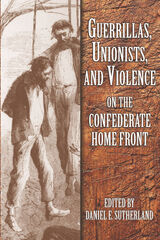 Guerrillas, Unionists, and Violence on the Confederate Home Front
Daniel E. Sutherland
University of Arkansas Press, 1999 Until recently, this localized violence was largely ignored, scholars focusing instead on large-scale operations of the war—the decisions and actions of generals and presidents. But as Daniel Sutherland reminds us, the impact of battles and elections cannot be properly understood without an examination of the struggle for survival on the home front, of lives lived in the atmosphere created by war. Sutherland gathers eleven essays by such noted Civil War scholars as Michael Fellman, Donald Frazier, Noel Fisher, and B. F. Cooling, each one exploring the Confederacy's internal war in a different state. All help to broaden our view of the complexity of war and to provide us with a clear picture of war's consequences, its impact on communities, homes, and families. This strong collection of essays delves deeply into what Daniel Sutherland calls "the desperate side of war," enriching our understanding of a turbulent and divisive period in American history.
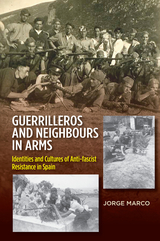 Guerrilleros and Neighbours in Arms: Identities and Cultures of Anti-fascist Resistance in Spain
Jorge Marco
Sussex Academic Press, 2022 The Spanish Civil War was the first battle against fascism in Europe. Five months after the victory of dictator Francisco Franco in Spain, the conflict moved to Europe with the outbreak of the Second World War. Anti-fascist resistance groups formed by ordinary citizens emerged in virtually all European countries. Although the Spanish resistance constituted the first and last anti-fascist resistance movement in Europe, the Spanish case has been consistently overlooked by international studies. This book inserts the Spanish anti-Franco resistance into the European context, proposing a new narrative of anti-fascist resistance in Europe. At the same time, the book offers a new interpretation of guerrilla phenomena with a strongly peasant character, as was the case of the resistance in Spain. Jorge Marco underlines the importance of primary groups (kinship, neighbourhood, friendship) and secondary groups (camaraderie and political loyalties) in the mobilisation and organisation of armed groups. For this study, twelve variables are established to distinguish between 'neighbours in arms' and 'modern guerrilla'. The studied combinations of groups and types demonstrates the plurality of the identities and cultures of the anti-fascist resistance in Spain. This book is published in association with the Canada Blanch Centre for Contemporary Spanish Studies. [Subject: Spanish Civil War, History, Anti-Fascism]
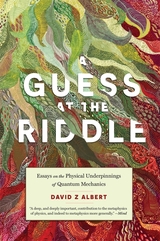 A Guess at the Riddle: Essays on the Physical Underpinnings of Quantum Mechanics
David Z Albert
Harvard University Press, 2023 From the celebrated author of Quantum Mechanics and Experience comes a “provocative” (Nature) and “deeply important” (Mind) attempt at making sense of the strange laws of quantum mechanics.
A century ago, Niels Bohr and a circle of brilliant physicists argued that the search for an objective, realistic, and mechanical picture of the inner workings of the atom was doomed to fail. Today, there is widespread agreement among philosophers and physicists that Bohr and his colleagues were wrong. But the question of what a correct picture might be remains unsettled.
In A Guess at the Riddle, philosopher David Z Albert offers a possibility. He argues that the strange features of quantum mechanics begin to make sense once we conceive of the wave function, vibrating and evolving in high-dimensional space, as the concrete, fundamental “stuff” of the universe. Constructing the defining elements of quantum mechanics from scratch, he shows how the entire history of our familiar, three-dimensional universe can be discerned in the wave function’s intricate pattern of ripples and whorls. A major new work in the foundations of physics, A Guess at the Riddle is poised to transform our understanding of the basic architecture of the universe.
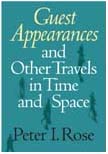 Guest Appearances and Other Travels in Time and Space
Peter I. Rose
Ohio University Press, 2003 Peter Rose has spent a lifetime exploring patterns of culture, examining issues of race and ethnicity, working with refugees, teaching sociology, and roaming the world. In Guest Appearances and Other Travels in Time and Space, he reflects on his adventures and the formative experiences that led him to a fascination with lives that seem quite unlike our own.
Guest Appearances and Other Travels in Time and Space introduces us to many of those whom Rose has met along the way, a cast of characters as colorful as it is diverse. It includes his music-loving mother; his tour guides in China, Germany, and Israel; Indochinese refugees he followed to the United States; the notorious murderer, Nathan Leopold; the simple tailor, Mr. David; and three writers for whom Rose has a special affinity: Philip Roth, John Updike, and Paul Theroux.
Peter Rose gives us an entirely pleasurable and insightful look into the life of an American scholar actively involved in contemporary issues as he takes readers along on his field trips and guest appearances.
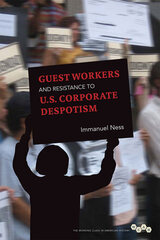 Guest Workers and Resistance to U.S. Corporate Despotism
Immanuel Ness
University of Illinois Press, 2011 Political scientist Immanuel Ness thoroughly investigates the use of guest workers in the United States, the largest recipient of migrant labor in the world. Ness argues that the use of migrant labor is increasing in importance and represents despotic practices calculated by key U.S. business leaders in the global economy to lower labor costs and expand profits under the guise of filling a shortage of labor for substandard or scarce skilled jobs. Drawing on ethnographic field research, government data, and other sources, Ness shows how worker migration and guest worker programs weaken the power of labor in both sending and receiving countries. His in-depth case studies of the rapid expansion of technology and industrial workers from India and hospitality workers from Jamaica reveal how these programs expose guest workers to employers' abuses and class tensions in their home countries while decreasing jobs for American workers and undermining U.S. organized labor. Where other studies of labor migration focus on undocumented immigrant labor and contend immigrants fill jobs that others do not want, this is the first to truly advance understanding of the role of migrant labor in the transformation of the working class in the early twenty-first century. Questioning why global capitalists must rely on migrant workers for economic sustenance, Ness rejects the notion that temporary workers enthusiastically go to the United States for low-paying jobs. Instead, he asserts the motivations for improving living standards in the United States are greatly exaggerated by the media and details the ways organized labor ought to be protecting the interests of American and guest workers in the United States.
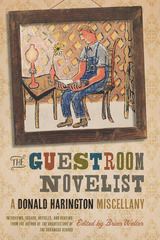 The Guestroom Novelist: A Donald Harington Miscellany
Donald Harington
University of Arkansas Press, 2019 Donald Harington, best known for his fifteen novels, was also a prolific writer of essays, articles, and book reviews. The Guestroom Novelist: A Donald Harington Miscellany gathers a career-spanning and eclectic selection of nonfiction by the Arkansawyer novelist Donald Harington that reveals how a life of devastating losses and disappointments inspired what the Boston Globe called the “quirkiest, most original body of work in contemporary US letters.” This extensive collection of interviews and other works of prose—many of which are previously unpublished—offers glimpses into Harington’s life, loves, and favorite obsessions, replays his minor (and not so minor) dramas with literary critics, and reveals the complicated and sometimes contentious relationship between his work of the writers he most admired. The Guestroom Novelist, which takes its title from an essay that serves as a love letter to his fellow underappreciated writers, paints a rich portrait of the artist as a young, middle-aged, and fiercely funny old man, as well as comic, sentimentalist, philosopher, and critic, paying testimony to the writer’s magnificent ability to transform the seemingly crude stuff of our material existence into enduring art.
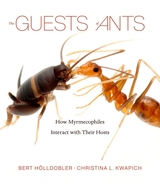 The Guests of Ants: How Myrmecophiles Interact with Their Hosts
Bert Hölldobler, Christina L. Kwapich
Harvard University Press, 2022 A fascinating examination of socially parasitic invaders, from butterflies to bacteria, that survive and thrive by exploiting the communication systems of ant colonies.
Down below, on sidewalks, in fallen leaves, and across the forest floor, a covert invasion is taking place. Ant colonies, revered and studied for their complex collective behaviors, are being infiltrated by tiny organisms called myrmecophiles. Using incredibly sophisticated tactics, various species of butterflies, beetles, crickets, spiders, fungi, and bacteria insert themselves into ant colonies and decode the colonies’ communication system. Once able to “speak the language,” these outsiders can masquerade as ants. Suddenly colony members can no longer distinguish friend from foe.
Pulitzer Prize–winning author and biologist Bert Hölldobler and behavioral ecologist Christina L. Kwapich explore this remarkable phenomenon, showing how myrmecophiles manage their feat of code-breaking and go on to exploit colony resources. Some myrmecophiles slip themselves into their hosts’ food sharing system, stealing liquid nutrition normally exchanged between ant nestmates. Other intruders use specialized organs and glandular secretions to entice ants or calm their aggression. Guiding readers through key experiments and observations, Hölldobler and Kwapich reveal a universe of behavioral mechanisms by which myrmecophiles turn ants into unwilling servants.
As The Guests of Ants makes clear, symbiosis in ant societies can sometimes be mutualistic, but, in most cases, these foreign intruders exhibit amazingly diverse modes of parasitism. Like other unwelcome guests, many of these myrmecophiles both disrupt and depend on their host, making for an uneasy coexistence that nonetheless plays an important role in the balance of nature.
Guidance in American Education
Edward Landy
Harvard University Press The third volume in this series deals with such topics as socioeconomic trends, psychological issues, testing and career development theory, mental health and the schools, contemporary observations of guidance practice, and policies and practices in pupil personnel services.
Guidance in American Education
Edward Landy
Harvard University Press Composed of 18 selected papers delivered at the 1964 Summer Institute for Administrators of Pupil Personnel Services at the Harvard Graduate School of Education, this volume deals with such contemporary educational concerns as changing community values, urban redevelopment, the social structure of the schools, unemployment of disadvantaged youth, pre-kindergarten and work-study programs, and career development theory—especially as these topics bear on the guidance function within education.
Guidance in American Education
Edward Landy
Harvard University Press This book is a compilation of papers selected from the 1963 Summer Institute for Administrators of Pupil Personnel Services held at Harvard. Distributed for the Harvard Graduate School of Education.
Guidance Note 1: Selection & Erection
The Institution of Engineering and Technology
The Institution of Engineering and Technology, 2015 Guidance Note 1: Selection & Erection contains clear guidance on how to apply the relevant sections of BS 7671. A fundamental guide for specifiers, installers and those testing installations, the expected updates in Amendment 3 greatly impact on day-to-day tasks.
Guidance Note 1: Selection & Erection
The Institution of Engineering and Technology
The Institution of Engineering and Technology, 2018 Guidance Note 1: Selection & Erection is a fundamental guide for specifiers, installers and those inspecting and testing installations. It contains clear guidance on how to apply the relevant sections of BS 7671 and has been fully updated to BS 7671:2018.
Guidance Note 1: Selection & Erection
The Institution of Engineering and Technology
The Institution of Engineering and Technology, 2022 Guidance Note 1: Selection & Erection is a fundamental guide for specifiers, installers and those inspecting and testing installations. It contains clear guidance on how to apply the relevant sections of BS 7671 and has been fully updated to BS 7671:2018+A2:2022.
Guidance Note 2: Isolation & Switching
The Institution of Engineering and Technology
The Institution of Engineering and Technology, 2015 Guidance Note 2: Isolation & Switching is an essential guide and reference manual on this sometimes confusing aspect of BS 7671. Aspects of the book updated to the changes in Amendment 3 include:
Guidance Note 2: Isolation & Switching
The Institution of Engineering and Technology
The Institution of Engineering and Technology, 2019 Guidance Note 2: Isolation & Switching provides clear guidance on what can be a confusing aspect of BS 7671. It is ideal for those working in specification, testing and inspection and for consulting engineers, as well as electrical installers and has been fully updated to BS 7671:2018.
Guidance Note 2: Isolation & Switching
The Institution of Engineering and Technology
The Institution of Engineering and Technology, 2022 Guidance Note 2: Isolation & Switching provides clear guidance on what can be a confusing aspect of BS 7671. It is ideal for those working in specification, testing and inspection and for consulting engineers, as well as electrical installers and has been fully updated to BS 7671:2018:2022.
Guidance Note 3: Inspection & Testing
The Institution of Engineering and Technology
The Institution of Engineering and Technology, 2015 Important changes to the EIC and EICR forms make Guidance Note 3: Inspection & Testing a priority for all those carrying out inspection and testing on electrical installations.
Guidance Note 3: Inspection & Testing
The Institution of Engineering and Technology
The Institution of Engineering and Technology, 2018 Guidance Note 3: Inspection & Testing is a fundamental guidance book for all those involved with the testing and inspection of electrical installations. It also contains essential guidance for those studying for inspection and testing qualifications and has been fully updated to BS 7671:2018.
Guidance Note 3: Inspection & Testing
The Institution of Engineering and Technology
The Institution of Engineering and Technology, 2022 Guidance Note 3: Inspection & Testing is a fundamental guidance book for all those involved with the testing and inspection of electrical installations. It also contains essential guidance for those studying for inspection and testing qualifications and has been fully updated to BS 7671:2018:2022.
Guidance Note 4: Protection Against Fire
The Institution of Engineering and Technology
The Institution of Engineering and Technology, 2015 Protection against fire is a key element of Amendment 3 to the 17th Edition. Vital changes will potentially vastly improve the safety of contractors, consumers and the fire services. Guidance Note 4: Protection Against Fire provides clear guidance on how to apply the updated aspects of BS 7671.
Guidance Note 4: Protection Against Fire
The Institution of Engineering and Technology
The Institution of Engineering and Technology, 2018 Guidance Note 4: Protection Against Fire is a vital guide to an important safety aspect of working with electricity. It is aimed at everyone involved with fire safety in electrical installations, including consulting engineers, electrical installers, inspectors and technicians and has been fully updated to BS 7671:2018.
Guidance Note 4: Protection Against Fire
The Institution of Engineering and Technology
The Institution of Engineering and Technology, 2022 Guidance Note 4: Protection Against Fire is a vital guide to an important safety aspect of working with electricity. It is aimed at everyone involved with fire safety in electrical installations, including consulting engineers, electrical installers, inspectors and technicians and has been fully updated to BS 7671:2018:2022.
Guidance Note 5: Protection Against Electric Shock
The Institution of Engineering and Technology
The Institution of Engineering and Technology, 2015 Protection Against Electric Shock is a core element of safety for specifiers, designers, contractors and inspectors. Important changes affecting Guidance Note 5 include but are not limited to changes to earth fault loop impedances for all protective devices.
Guidance Note 5: Protection Against Electric Shock
The Institution of Engineering and Technology
The Institution of Engineering and Technology, 2018 Guidance Note 5: Protection Against Electric Shock provides a core element of safety for specifiers, designers, contractors and inspectors. It includes clear guidance on how to apply the safety requirements of BS 7671 concerning electric shock and has been fully updated to BS 7671:2018.
Guidance Note 5: Protection Against Electric Shock
The Institution of Engineering and Technology
The Institution of Engineering and Technology, 2022 Guidance Note 5: Protection Against Electric Shock provides a core element of safety for specifiers, designers, contractors and inspectors. It includes clear guidance on how to apply the safety requirements of BS 7671 concerning electric shock and has been fully updated to BS 7671:2018+A2:2022.
Guidance Note 6: Protection Against Overcurrent
The Institution of Engineering and Technology
The Institution of Engineering and Technology, 2015 Guidance Note 6: Protection Against Overcurrent is a guide and reference manual on this key safety aspect of BS 7671. Ensure you are up to date with the changes to regulations around heating equipment and fuses to make sure your work complies.
Guidance Note 6: Protection Against Overcurrent
The Institution of Engineering and Technology
The Institution of Engineering and Technology, 2018 Guidance Note 6: Protection Against Overcurrent is a key guide to this important area of BS 7671. It is intended for all involved with specifying, designing, installing or verifying electrical installations and has been fully updated to BS 7671:2018.
Guidance Note 6: Protection Against Overcurrent
The Institution of Engineering and Technology
The Institution of Engineering and Technology, 2022 Guidance Note 6: Protection Against Overcurrent is a key guide to this important area of BS 7671. It is intended for all involved with specifying, designing, installing or verifying electrical installations and has been fully updated to BS 7671:2018:2022.
Guidance Note 7: Special Locations
The Institution of Engineering and Technology
The Institution of Engineering and Technology, 2015 Guidance Note 7: Special Locations provides a comprehensive guide to the various special locations and installations for which additional measurers are required to comply with BS 7671.
Guidance Note 7: Special Locations
The Institution of Engineering and Technology
The Institution of Engineering and Technology, 2019 Guidance Note 7: Special Locations provides a comprehensive guide to the various special locations and installations for which additional measures are required to comply with BS 7671. It is designed for anyone working in special locations where guidance may vary, including consulting engineers, electricians, electrical installers, inspectors and technicians and has been fully updated to BS 7671:2018.
Guidance Note 7: Special Locations
The Institution of Engineering and Technology
The Institution of Engineering and Technology, 2022 Guidance Note 7: Special Locations provides a comprehensive guide to the various special locations and installations for which additional measures are required to comply with BS 7671. It is designed for anyone working in special locations where guidance may vary, including consulting engineers, electricians, electrical installers, inspectors and technicians and has been fully updated to BS 7671:2018+A2:2022.
Guidance Note 8: Earthing & Bonding
The Institution of Engineering and Technology
The Institution of Engineering and Technology, 2015 Guidance Note 8: Earthing & Bonding provides a comprehensive guide to this subject and has been updated to reflect the changes made in Amendment 3.
Guidance Note 8: Earthing & Bonding
The Institution of Engineering and Technology
The Institution of Engineering and Technology, 2019 Guidance Note 8: Earthing & Bonding includes information from BS 7430 Code of Practice for Earthing. It covers key guidance for all involved with specifying, designing, installing or verifying electrical installations and has been fully updated to BS 7671:2018.
Guidance Note 8: Earthing & Bonding
The Institution of Engineering and Technology
The Institution of Engineering and Technology, 2022 Guidance Note 8: Earthing & Bonding includes information from BS 7430 Code of Practice for Earthing. It covers key guidance for all involved with specifying, designing, installing or verifying electrical installations and has been fully updated to BS 7671:2018+A2:2022.
 Guidance Procedures in High School: Some Recommended Procedures Based Upon a Survey of Present Practices in Minnesota
C. Wrenn
University of Minnesota Press, 1950
Guidance Procedures in High School was first published in 1950. Minnesota Archive Editions uses digital technology to make long-unavailable books once again accessible, and are published unaltered from the original University of Minnesota Press editions.This volume is number 1 in the Modern School Practices series; established in 1950 by the College of Education at the University of Minnesota, and the Bureau of Educational Research. The series is designed as a replacement to two earlier series: the Series on Individualization of Instruction and the Modern School Curriculum series.This monograph presents some recommended practices within the framework of a comprehensive and balanced program proposed for student personnel services in high schools. Topics discussed include: organizing and developing guidance services; orientation of new students; understanding the student through the individual inventory; counseling students; learning from group experience; health services; placement in jobs and in further training; and checking on effectiveness of the guidance program.
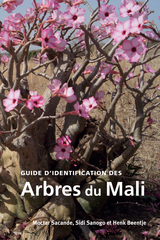 Guide d'identification des Arbres du Mali
Moctar Sacande, Sidi Sanogo, and Henk Beentje
Royal Botanic Gardens, Kew, 2016 Description in French:
(For English description see below) Le Guide d’identification des Arbres du Mali est la synthèse de plus de dix années de collecte de spécimens végétaux (graines et herbiers) et d’informations sur la flore locale dans le cadre des activités de conservation des ressources phytogénétiques au Mali, en collaboration avec le Royal Botanic Gardens Kew. Produit unique et dérivé du partenariat Millennium Seed Bank (MSB), le programme a aussi été mis à profit pour combler un manque d’institution nationale et de documentation, particulières a la flore du Mali. L’Unité de Semences Forestières et Herbier (USF-H) du Mali contient aujourd’hui environ 10,000 spécimens de près de 1,000 espèces de la flore nationale. Ce guide de terrain fournit de précieuses informations locales et un effort particulier a été déployé pour faciliter la reconnaissance de ces 300 espèces ligneuses à travers les descriptions botaniques, les noms locaux, les cartes de répartition géographique et les fascinantes photographies comme aide visuelle à leur identification. Les informations sur les graines aident à la régénération, la propagation, la domestication et les plantations pour une utilisation durable de ces espèces locales utiles.
Text in French.
Description in English:
Guide d’identification des arbres du Mali is the result of over ten years research in collaboration with Kew’s Millennium Seed Bank Project. Over 300 woody plant species are described in the book, with accompanying keys, colour photographs, distribution maps and local names and uses. This book is an essential reference for anyone required to know and recognize the woody flora of the forests of Mali, including forestry technicians, agriculturists, conservation workers, farmers, botanists, teachers and students.
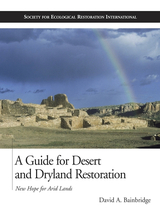 A Guide for Desert and Dryland Restoration: New Hope for Arid Lands
David A. Bainbridge; Society for Ecological Restoration International
Island Press, 2007 Dryland degradation and desertification now affect almost a billion people around the world. Tragically, the biological resources and productivity of millions of acres of land are lost to desertification each year because people remain unaware of strategies and techniques that could improve yields, reduce risk, and begin healing the world's deserts. A Guide for Desert and Dryland Restoration is the first book to offer practical, field-tested solutions to this critical problem. Author David Bainbridge has spent more than 25 years actively involved in restoring lands across the American Southwest. A Guide for Desert and Dryland Restoration presents the results of his years of fieldwork, as well as research and experience from scientists and practitioners around the globe. The book discusses the ecology of desert plants, explores the causes of desertification and land abuse, and outlines the processes and procedures needed to evaluate, plan, implement, and monitor desert restoration projects. It sets forth economical and practical field-tested solutions for understanding site characteristics, selecting and growing plants, and ensuring that they survive with a minimal amount of water and care. Each chapter represents a guide to a critical topic for environmental restoration; extensive photographs, diagrams and drawings give detailed information for immediate application, and additional resources are included in appendixes. A Guide for Desert and Dryland Restoration is the first comprehensive book focused on restoring arid regions, and clearly demonstrates that arid lands can be successfully rehabilitated. In addition to restorationists, the book will be an invaluable resource for anyone working in arid lands, including farmers, ranchers, gardeners, landscapers, outdoor recreation professionals, and activists.
Guide for Mental Health Workers
Armando R. Favazza, M.D., Barbara Starks Favazza, M.D., and Philip M. Margolis, M.D.
University of Michigan Press, 1970 Written for the non-professional in the field of mental health, this unique manual explains—in jargon-free language—the basic categories and causes of mental illness, and the types of services that the volunteer or lay mental health worker can perform in the community. The volume fills a distinct need for concise and authoritative materials to match the growing community interest in adequate and informed mental health care.
The Guide of the Perplexed: Complete in One Volume
Moses Maimonides
University of Chicago Press, 1963 The classic translation of this most important medieval Jewish text, presented in one volume for the first time.
The twelfth-century Judeo-Arabic text The Guide of the Perplexed is a monument of rabbinical exegesis and one of the most important works in the history of Jewish thought. Written by Moses ben Maimon,commonly known as Maimonides, the Guide aims to liberate people from the perplexities that arise from an understanding of the Bible based only on its literal meaning.
Shlomo Pines’s translation has served students and scholars for decades, and it is presented here, with Leo Strauss’s influential introduction, in one volume for the first time.
The Guide of the Perplexed, Volume 1
Moses Maimonides
University of Chicago Press, 1963 The most authoritative translation of this classic work of Jewish thought
This monument of rabbinical exegesis written at the end of the twelfth century has exerted an immense and continuing influence upon Jewish thought. Its aim is to liberate people from the tormenting perplexities arising from their understanding of the Bible according only to its literal meaning. This edition contains extensive introductions by Shlomo Pines and Leo Strauss, a leading authority on Maimonides.
The Guide of the Perplexed, Volume 2
Moses Maimonides
University of Chicago Press, 1963 The most authoritative translation of this classic work of Jewish thought
This monument of rabbinical exegesis written at the end of the twelfth century has exerted an immense and continuing influence upon Jewish thought. Its aim is to liberate people from the tormenting perplexities arising from their understanding of the Bible according only to its literal meaning. This edition contains extensive introductions by Shlomo Pines and Leo Strauss, a leading authority on Maimonides.
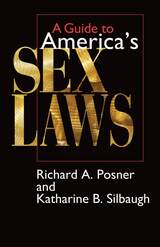 A Guide to America's Sex Laws
Richard A. Posner and Katharine B. Silbaugh
University of Chicago Press, 1996 A Guide to America's Sex Laws is the first concise compendium of the nation's sex laws. It summarizes the laws regulating personal sexual activity, revealing gaps, anachronisms, anomalies, inequalities, and irrationalities, and providing an empirical basis for studies of sexual regulation. Judge Richard A. Posner and Katharine B. Silbaugh cover broadly defined areas of regulation, providing background and definitions and placing the laws in their historical and constitutional context. From Alabama to Wyoming, this informative and fascinating reference book will be an essential resource.
"It takes only a few minutes with A Guide to [America's] Sex to realize that the nation's laws governing what two consenting adults can do with one another are an odd jumble."—Eric Fidler, San Diego Commerce
"Especially noteworthy is how laws governing various sexual activities vary from state to state."—Library Journal
"Fascinating and often surprising facts are concisely documented and conveniently organized in A Guide."—Carlin Meyer, New York Law Journal
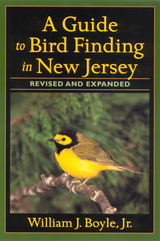 A Guide to Bird Finding in New Jersey
William J. Boyle, Jr.
Rutgers University Press, 2002 New Jersey is one of the smallest and most densely populated states, yet the remarkable diversity of its birdlife surpasses that of many larger states. Well over 400 species of birds have been recorded in New Jersey and an active birder can hope to see more than 300 species in a year. William J. Boyle has updated his classic guide to birding in New Jersey, featuring all new maps and ten new illustrations. The book is an invaluable companion for every birder - novice or experienced, New Jerseyan or visitor. A Guide to Bird Finding in New Jersey features: More than 130 top birding spots described in detail Clear maps, travel directions, species lists, and notes on birding An annotated list of the frequency and abundance of the state's birds, including waterbirds, pelagic birds, raptors, migrating birds, and northern and southern birds at the edge of their usual ranges A comprehensive bibliography and index The guide also includes helpful information on: Birding in New Jersey by season Telephone and internet rare bird alerts Pelagic birding Hawk watching Bird and nature clubs in the state
Guide to Cables and Cable Management
The Institution of Engineering and Technology
The Institution of Engineering and Technology, 2020 The Guide to Cables and Cable Management is an authoritative guide to all types of cables used in electrical work and good cable management practice. It provides clear information on the classes, sizes and types of cable, detailing appropriate and common applications and information on fire performance, accreditation and cable marking and IP ratings.
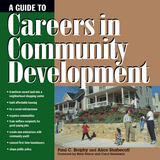 A Guide to Careers in Community Development
Paul C. Brophy and Alice Shabecoff
Island Press, 2001 Community development -- the economic, physical, and social revitalization of a community, led by the people who live in that community -- offers a wide range of exciting and rewarding employment options. But until now, there has been no "road map" for professionals, volunteers, students, or anyone wishing to become involved in the field. A Guide to Careers in Community Development describes the many different kinds of community development jobs available, ranging from community organizing, to financing housing and new businesses, to redeveloping brownfields. It offers advice on how to break into the field along with guidance for career advancement and lateral movement. Following an introductory chapter that offers an overview and definition of community development and its history, the authors describe: - different institutions in the field and how they fit together
- pros and cons of community development careers, with a self-assessment quiz for readers to use in analyzing their suitability for the field
- the work and skills involved in different kinds of positions
- how to prepare for and move up in a career
- how to land that first job
Also included are detailed appendixes that provide information on job descriptions with salary ranges; universities and colleges offering community development curricula; training programs; where to look for job announcements; internet resources; internships, fellowships, and volunteer positions; and much more. A Guide to Careers in Community Development is an essential reference for anyone interested in working in the community development field, including graduate and undergraduate students, volunteers, and mid-career professionals seeking a more fulfilling line of work.
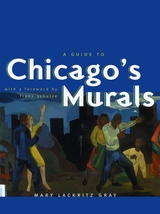 A Guide to Chicago's Murals
Mary Lackritz Gray
University of Chicago Press, 2001 Chicago is a city known for its fabulous architecture and public sculpture by artists such as Picasso and Calder, but anyone who has seen the gorgeous lunettes in the Auditorium Theater or the South Side's Wall of Respect, which inaugurated the city's contemporary mural movement, knows that Chicago has an equally rich tradition of mural painting. Through these murals, the history of Chicago and the nation is writ in churches and lobbies, on viaducts and school walls. Mary Gray's A Guide to Chicago's Murals is the first definitive handbook to the treasures that can be found all over the city.
With full-color illustrations of nearly two hundred Chicago murals and accompanying entries that describe their history—who commissioned them and why, how artists collaborated with architects, the subjects of the murals and their contexts—A Guide to Chicago's Murals serves both a general and a specific audience. Divided into easy-to-read geographical sections with useful maps for walking tours, it is the perfect companion for tourists or Chicagoans interested in coming to know better this aspect of the city's history. Gray also provides crucial information on lesser-known artists and on murals that have been destroyed over the years, filling a gap in the visual record of the city's development.
Gray also includes biographies of more than 150 artists and a glossary of key terms, making A Guide to Chicago's Murals essential reading for mural viewing. From post offices to libraries, fieldhouses to banks, and private clubs to street corners, Mary Gray chronicles the amazing works of artists who have sought to make public declarations in this most social of art forms.
"A major lacuna in the history of art in Chicago has been filled, with the thoroughness of the research proportionate to the richness of the material revealed."—From the Foreword by Franz Schulze
"Gray's book . . . can function as a guidebook, as the murals are conveniently arranged according to the quadrants of the city. But the book is also beautiful to look at and indespensable as art history and Chicago history as well. . . . This book is a wonderful guide to Chicago's rich and unique mural tradition."—Elizabeth Alexander, Chicago Tribune Books
"If you love art and history, this is a book you'll truly enjoy."—Al Paulson, Utne Reader
 Guide to Chicago's Twenty-First-Century Architecture
Chicago Architecture Center and John Hill
University of Illinois Press, 2021 Exploring a new century of architecture in the Windy City Chicago's wealth of architectural treasures makes it one of the world's majestic cityscapes. Published in collaboration with the Chicago Architecture Center, this easy-to-use guide invites you to discover the new era of twenty-first-century architecture in the Windy City via two hundred architecturally significant buildings and spaces in the city and suburbs. Features include: - Entries organized by neighborhood
- Maps with easy-to-locate landmarks and mass transit options
- Background on each entry, including the design architect, name and address, description, and other essential information
- Sidebars on additional sites and projects
- A detailed supplemental section with a glossary, selected bibliography, and indexes by architect, building name, and building type
Up-to-date and illustrated with almost four hundred color photos, the Guide to Chicago's Twenty-First-Century Architecture takes travelers and locals on a journey into an ever-changing architectural mecca.
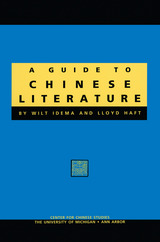 A Guide to Chinese Literature
Wilt L. Idema and Lloyd L. Haft
University of Michigan Press, 1997 For at least three thousand years, literature has played a central role in Chinese culture. Even in the most recent times, literary works and their authors have stood in the spotlight of social and political debates that affected the lives of millions. This great respect for literature, together with China’s long history of writing and printing techniques, has resulted in a vast body of writings from past eras, while present-day literary production is so extensive that even the specialist can hardly keep abreast. A Guide to Chinese Literature provides a broad sketch of this vast terrain. The book is organized into six parts. The first part provides general readers and students of Chinese culture an overview of six crucial features of Chinese literature from beginnings to the early twentieth century. The remaining five parts present a concise overview of the literature itself, arranged into chronological periods: beginnings to 100 CE; 100–1000; 1000–1875; 1875–1915; and 1915 to the present. The development of the major literary genres is traced in each of these periods. The hardcover edition concludes with an annotated bibliography of more than 120 pages covering the most relevant studies and translations in English, French, German, and Dutch. The paper edition has a shorter bibliography and is intended for classroom use.
The Guide to Classic Recorded Jazz
Samuel F., Jr. Piazza
University of Iowa Press, 1995 Here is a brilliant and deeply informed overview of jazz history, one which gives a rich sense of who the major figures were and how they fit in with one another while showing the reader what to listen for and which recordings are indispensable for a full experience of the music. No other book fuses a singular examination of the key recordings with a presentation of the entire sweep of the music's classic period to provide the listener with such a useful and spirited companion. Winner of the ASCAP-Deems Taylor Award, presented annually by the American Society of Composers, Authors and Publishers to American authors and journalists whose books and articles on the subject of music are selected for their excellence.
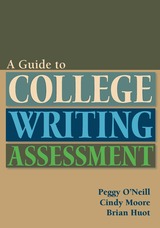 Guide to College Writing Assessment
Peggy O'Neill, Cindy Moore, and Brian Huot
Utah State University Press, 2009 While most English professionals feel comfortable with language and literacy theories, assessment theories seem more alien. English professionals often don’t have a clear understanding of the key concepts in educational measurement, such as validity and reliability, nor do they understand the statistical formulas associated with psychometrics. But understanding assessment theory—and applying it—by those who are not psychometricians is critical in developing useful, ethical assessments in college writing programs, and in interpreting and using assessment results.
A Guide to College Writing Assessment is designed as an introduction and source book for WPAs, department chairs, teachers, and administrators. Always cognizant of the critical components of particular teaching contexts, O’Neill, Moore, and Huot have written sophisticated but accessible chapters on the history, theory, application and background of writing assessment, and they offer a dozen appendices of practical samples and models for a range of common assessment needs.
Because there are numerous resources available to assist faculty in assessing the writing of individual students in particular classrooms, A Guide to College Writing Assessment focuses on approaches to the kinds of assessment that typically happen outside of individual classrooms: placement evaluation, exit examination, programmatic assessment, and faculty evaluation. Most of all, the argument of this book is that creating the conditions for meaningful college writing assessment hinges not only on understanding the history and theories informing assessment practice, but also on composition programs availing themselves of the full range of available assessment practices.
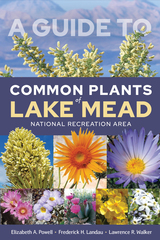 A Guide to Common Plants of Lake Mead National Recreation Area
Elizabeth A. Powell
University of Nevada Press, 2023 A Guide to Common Plants of Lake Mead National Recreation Area is the definitive book for weekend explorers and botanists alike who venture into LMNRA ready to discover the many wonders of the local flora. The authors highlight 183 plants that hikers are most likely to encounter along popular trails, washes, and surrounding hot springs, helping the area’s millions of annual visitors identify and enjoy these common plants. This guide includes photos and descriptions of each plant, along with a map of LMNRA.
The authors also provide a primer on plant ecology, including a guide to plant structures, desert adaptations and life forms, plant-to-plant interactions, and plant-animal interactions. Plants are grouped by life forms, such as tree, shrub, cactus, or grass, and by flower color within the wildflower section. The guide will encourage readers to pause and look carefully at each plant they encounter, giving them an enriched experience during their exploration.
Guide to Consumer Units
The Institution of Engineering and Technology
The Institution of Engineering and Technology, 2017 This guide clarifies requirements for new Regulation 421.1.201, includes case studies showing how aspects of an installation can be approached and dealt with and provides guidance to electricians, installers, specifiers, duty holders, housing associations, LABC and landlords.
 A Guide to Critical Legal Studies
Mark Kelman
Harvard University Press, 1987 Until now there has been no summary or overview of the wide range of work contributing to critical legal studies, the movement that has aroused such a furor in the communities of law and political philosophy. This book outlines and evaluates the principal strands of critical legal studies, and achieves much more as well.
A good deal of the writing in critical legal studies has been devoted to laying bare the contradictions in liberal thought. There have been attacks and counterattacks on the liberal position and on the more conservative law and economics position. Now Mark Kelman demonstrates that any critique of law and economics is inextricably tied to a broader critique of liberalism.
There are three central contradictions in liberal thought: between a commitment to mechanically applicable rules and to standards that fluctuate with situations; between intrinsic individual values and the objective knowledge of ethical truths; and between free will and determinism. Kelman shows us the pervasiveness of these contradictions in legal doctrine; their connection to broader political theory and to visions of human nature; and, finally, the degree to which mainstream thought tends to privilege certain of these commitments over others.
The author also analyzes two of the most significant components of jurisprudence today the law and economics discipline and the legal process school. He concludes with a lively discussion of the role of law generally and of “cognitive legitimation,” or the ways in which legal thought can make the unnecessary, the contingent, and the unjust seem natural, inevitable, and fair.
Guide to Data Centre Power Systems
The Institution of Engineering and Technology
The Institution of Engineering and Technology, 2022 Data centres are at the heart of our modern-day digital infrastructure. Our use of and reliance on data is only set to grow and therefore data centres will also have to grow in number and size with improved reliability, resilience and efficiency.
Guide to Earthing and Bonding for AC Electrified Railways
The Institution of Engineering and Technology
The Institution of Engineering and Technology, 2022 The complexity of integrating the earthing of an AC electrified railway with various electrical distribution systems and exposed conductive parts means that it is impossible to prescribe one earthing and bonding design solution that addresses the needs of every railway. Therefore, different earthing designs are needed for individual railways.
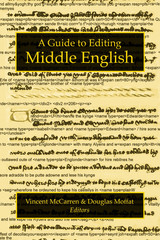 A Guide to Editing Middle English
Vincent McCarren and Douglas Moffat, Editors
University of Michigan Press, 1998 Those who undertake a scholarly edition of a Middle English text have until now had no general guide for their work. All who study English literary works must rely on editions at some stage, and this volume will provide them with many perspectives on the formation of these necessary scholarly tools. Editors of texts in other medieval languages and indeed all those engaged with questions of scholarly editing--whether practical, historical, or theoretical--will also find important contributions in this volume.
A Guide to Editing Middle English collects nineteen essays and three appendices written by leading text editors in Middle English. A number of essays deal primarily with theoretical questions, while others offer assessments of historical developments in editing, especially in regard to the most well-known Middle English works. Most of the essays deal with practical matters: how to use a computer in preparing and presenting an edition; how to form and arrange the standard parts of an edition; and how to handle problems presented by texts in areas such as science, astrology, and cooking. The three appendices provide bibliographical references to dictionaries, facsimiles, and manuscript description.
Contributors, in addition to the editors, are Peter Baker, Richard Beadle, Norman Blake, Helen Cooper, A. S. G. Edwards, Jennifer Fellows, David C. Greetham, Mary Hamel, Constance Heiatt, Nicholas Jacobs, Geroge Keiser, Peter J. Lucas, Maldwyn Mills, Linne Mooney, and Peter Robinson.
The many and varied perspectives of this volume will make it of interest to readers of Middle English texts, those involved in textual scholarship, and those interested in editing in general. It occupies a unique place in the field of Middle English studies and will likely remain a standard reference tool for a long time.
Vincent McCarren is a Research Associate with the Middle English Dictionary at the University of Michigan. Douglas Moffat, formerly with the Middle English Dictionary, is a Development Officer with the University of Michigan.
Guide to Electric Vehicle Charging Installations at Filling Stations
The Institution of Engineering and Technology
The Institution of Engineering and Technology, 2025 As part of the rapid growth and development of the whole electric vehicle charging infrastructure, filling stations are seen as an obvious place to provide charging facilities. However, it is recognised that difficult safety and logistical issues are linked to such installations.
Guide to Electrical Installations in Medical Locations
The Institution of Engineering and Technology Harris
The Institution of Engineering and Technology, 2017 This guide provides definitive guidance on electrical installations in medical locations, including earthing and bonding arrangements. It expands the information in Guidance Note 7: Special Locations.
Guide to Electrical Maintenance
The Institution of Engineering and Technology
The Institution of Engineering and Technology, 2015 The Guide to Electrical Maintenance provides guidance on carrying out maintenance activities and using good practice techniques. It examines the operational risks, mitigations and processes that may be used in carrying out electrical maintenance, and also provides insights and philosophies to ensure that electrical maintenance activities are not only safe, but are satisfactorily planned and properly carried out.
Guide to Electrical Maintenance
The Institution of Engineering and Technology
The Institution of Engineering and Technology, 2022 Good maintenance regimes do not happen by accident: they need careful planning, proactive management and comprehensive reporting.
Guide to Energy Management in the Built Environment
The Institution of Engineering and Technology
The Institution of Engineering and Technology, 2017 The Guide to Energy Management in the Built Environment aims to provide clear and concise information that can be developed and applied to a number of different installations.
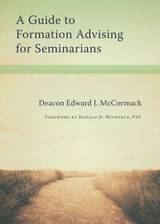 A Guide to Formation Advising for Seminarians
Edward J. McCormack
Catholic University of America Press, 2020 The future of the Church depends, in part, on forming future priests and ministers who are ready to accompany, lead, and love the People of God. Formation advising is one important part of that work. A Guide to Formation Advising for Seminarians/Seminary Faculty offers a practical guide to formation advising as a ministry of accompaniment, participation, and evaluation. Deacon Edward McCormack offers a comprehensive introduction to the ministry of formation advising for seminarians studying for priestly ministry. These volumes are for men and women who are new to the ministry of formation advising. The recent Vatican guidelines for seminary formation call for professional accompaniment of seminarians throughout their formation. This book explains in concrete detail how to do this through the entire formation process.
Beginning with an overview of the formation process, A Guide to Formation Advising for Seminarians/Seminary Faculty explains the role of the formation advisor and the skills required for that ministry. It describes the various ways the formation advisor accompanies a person through the formation process. McCormack also provides concrete suggestions for how to promote in seminarians’ active participation in the process. Formators will also find explanation of the evaluation process with a style sheet and examples of written evaluations. The handbook contains an annotated bibliography on all the major topics a formation advisor comes across.
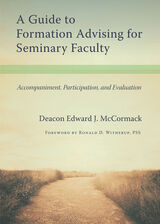 A Guide to Formation Advising for Seminary Faculty: Accompaniment, Participation, and Evaluation
Edward J. McCormack
Catholic University of America Press, 2020 The future of the Church depends, in part, on forming future priests and ministers who are ready to accompany, lead, and love the People of God. Formation advising is one important part of that work. A Guide to Formation Advising for Seminarians/Seminary Faculty offers a practical guide to formation advising as a ministry of accompaniment, participation, and evaluation. Deacon Edward McCormack offers a comprehensive introduction to the ministry of formation advising for seminarians studying for priestly ministry. These volumes are for men and women who are new to the ministry of formation advising. The recent Vatican guidelines for seminary formation call for professional accompaniment of seminarians throughout their formation. This book explains in concrete detail how to do this through the entire formation process.
Beginning with an overview of the formation process, A Guide to Formation Advising for Seminarians/Seminary Faculty explains the role of the formation advisor and the skills required for that ministry. It describes the various ways the formation advisor accompanies a person through the formation process. McCormack also provides concrete suggestions for how to promote in seminarians’ active participation in the process. Formators will also find explanation of the evaluation process with a style sheet and examples of written evaluations. The handbook contains an annotated bibliography on all the major topics a formation advisor comes across.
 Guide to Fossil Man
Michael H. Day
University of Chicago Press, 1986 Michael H. Day's Guide to Fossil Man is the standard reference work on hominid remains found at the major palaeolithic sites throughout the world. This fourth edition now includes details of fifteen new sites, as well as new evidence from thirty-four previously known sites featured in earlier editions of the book.
Day begins with an introduction to the anatomy of human fossils. He then describes the forty-nine sites in Europe, the Near East, Africa, the Middle East, Asia, and Oceania that have yielded the most significant information on the development of hominid species and the appearance of early man. Grouped geographically, each site description includes data on the hominid remains, other finds such as tools and animal bones, the local geology and contemporary geomorphology and ecology, and dating and other references. Sites featured for the first time in this edition include Kow Swamp and Mungo in Australia; Dali and Maba in China; and West Turkana in Kenya, which contained the almost complete skeleton of a boy determined to be 1,600,000 years old.
Short essays on problems associated with neandertal, australpithecine, and Homo erectus remains are included, as well as a glossary, a geological time scale, charts and comprehensive illustrations. Day's Guide to Fossil Man is invaluable not only for working palaeontologists, palaeolithic archaeologists, and physical anthropologists, but also for anyone interested in human evolution.
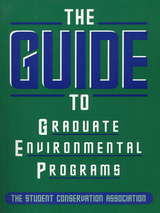 The Guide to Graduate Environmental Programs
Foreword by Scott D. Izzo
Island Press, 1997 The Guide to Graduate Environmental Programs provides over 160 profiles of graduate programs across the country that offer curricula related to the environment. Because it was impossible to include every program in the book, and because these programs are constantly changing, Island Press welcomes suggested changes and additions to the profiles. While Island Press is not the official "author" of the book, we are eager to receive new or updated information to be included in the next edition. Drawing from this information, Island Press has created an online listing of programs that were not profiled in the book. To submit your contribution, either fill out the postcard included in the book itself, or e-mail the name, address, phone number, and e-mail address of the "contact person" for that program; someone will contact that person for further information as the second edition is developed. If you would like to correct an error or to provide specific "update" information, please e-mail that information or return the card included in the book. Following is a description of how the book was researched and the profiles compiled: The research process began with a list, drawn up by career center staff at University of California at Santa Barbara, of 412 environmental programs, departments, and schools within universities across the country. The list was based on a literature search, queries over the Internet, and contact with environmental professionals and associations. Certificate-only programs were not included. Selection preference was given to programs mentioned repeatedly by environmental professionals, and to those drawing a more diverse student body. Postcards requesting information and course catalogues were sent to all 412 programs. A survey was mailed to faculty representing each program. Of the 412 graduate programs queried, 156 programs completed and returned their surveys. Each completed survey was reworked into a profile. Schools that did not respond to the mailing were contacted twice by phone to remind them to return the survey. To supplement this information, and to ensure that the most noteworthy programs were included in the guide, additional profiles were compiled for a select number of key programs that failed to return their surveys. These latter profiles were based on literature review and personal interviews. In all, each program was contacted three times – once by mail and twice by phone – to encourage them to submit their surveys, and to verify and update information. The absence of a particular profile, or segment of a profile, reflects no editorial judgement on the part of the authors. Rather, if a specific program was not profiled, the most likely explanation is that the program in question did not return its survey. If you have information on other graduate environmental programs, please pass that information on to us, so that we can include them in future editions of the guide. Most of the information provided was accurate as of November 1994 – the date by which the surveys were completed – and some follow-up verification was conducted during the summer of 1996, before the book went into production. There are an ever-expanding number of programs in the environmental field, and existing programs are constantly evolving. Readers should therefore expect to continue to encounter ongoing changes in names, titles, and phone numbers.
A Guide to Greek Thought: Major Figures and Trends
Jacques Brunschwig
Harvard University Press, 2003 The philosophers, historians, and scientists of ancient Greece inaugurated and nourished the tradition of Western thought. This volume, drawn from the reference work Greek Thought: A Guide to Classical Knowledge, gives fresh insight into the originality of major figures and the legacy of important currents of thought.
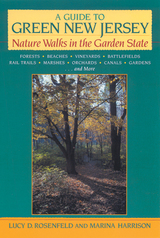 A Guide to Green New Jersey: Nature Walks in the Garden State
Rosenfeld, Lucy D
Rutgers University Press, 2003 New Jersey is a state of surprises. Did you know there was a castle in Passaic County? Or that Essex County’s Branch Brook Park, rather than Washington, D.C., has the largest concentration of flowering cherry trees outside of Japan? Did you know you could walk through a bamboo forest on the Rutgers University campus, dig for fossils in Middletown’s Poricy Brook, visit an owl haven on the site of the Battle of Monmouth, or see wild river otters in Salem County?
Despite its proximity to major urban areas and its high population density, the state has dozens of absolutely marvelous natural areas and preserved spaces. It boasts something for everyone, from Atlantic seashore to rugged mountains, rolling farmland to winding canals, historic trails to formal gardens, bird-filled marshes to hardwood forests, pine barrens to fragrant vineyards and orchards. There are outings for hikers, bikers, beachcombers, gardeners, power-walkers, and strollers of all kinds, and A Guide to Green NewJersey is your key to finding it all.
The book is conveniently organized into forty geographic areas, spotlighting more than 200 nature walks. Each entry includes a description, visitor hours, fees, driving accessibility, and other pertinent information for walkers. At the end of the book, the authors provide an index with the names of each site, and their guide to choosing an outing according to individual tastes and interests. They identify sites that are wheelchair accessible, especially fun for kids, best for bicyclists, and those that are particularly physically challenging. Newcomers to the state will find the book indispensable, and long-time New Jerseyans will find it a pleasantly eye-opening guide to wonderful walks right in their own backyards.
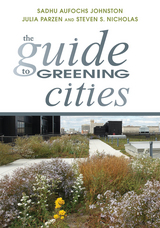 The Guide to Greening Cities
Sadhu Aufochs Johnston, Steven S. Nicholas, and Julia Parzen
Island Press, 2013 Cities are on the front lines of climate change, increasingly called upon to protect people, infrastructure, and natural systems in the face of rising risks. The Guide to Greening Cities captures how municipal leaders across North America are reshaping urban environments—making sustainability a core strategy rather than an afterthought. Drawing from direct experience in city governments, authors Sadhu Johnston, Steven Nicholas, and Julia Parzen show what it takes to move bold climate and equity goals from vision to action.
Through case studies and candid interviews with officials from cities like San Antonio, Vancouver, and Minneapolis, the book uncovers the strategies behind effective green programs—from rethinking city operations to securing funding, navigating political shifts, and building long-lasting partnerships. Readers see how cities overcome common roadblocks like fiscal constraints and changes in leadership while still advancing ambitious climate, justice, and public health initiatives.
Designed for professionals and students alike, this guide offers proven insights into how cities can lead through example, activate communities, and institutionalize sustainability across departments. Whether you're in city hall, a nonprofit, or the classroom, The Guide to Greening Cities provides the tools to build greener, more resilient cities—rooted in real-world challenges and grounded in what actually works.
 A Guide to Impact Fees and Housing Affordability
By Arthur C. Nelson, Liza K. Bowles, Julian C. Juergensmeyer, and James C. Nicholas
Island Press, 2008 Impact fees are one-time charges that are applied to new residential developments by local governments that are seeking funds to pay for the construction or expansion of public facilities, such as water and sewer systems, schools, libraries, and parks and recreation facilities. In the face of taxpayer revolts against increases in property taxes, impact fees are used increasingly by local governments throughout the U.S. to finance construction or improvement of their infrastructure. Recent estimates suggest that 60 percent of all American cities with over 25,000 residents use some form of impact fees. In California, it is estimated that 90 percent of such cities impose impact fees. For more than thirty years, impact fees have been calculated based on proportionate share of the cost of the infrastructure improvements that are to be funded by the fees. However, neither laws nor courts have ensured that fees charged to new homes are themselves proportionate. For example, the impact fee may be the same for every home in a new development, even when homes vary widely in size and selling price. Data show, however, that smaller and less costly homes have fewer people living in them and thus less impact on facilities than larger homes. This use of a flat impact fee for all residential units disproportionately affects lower-income residents. The purpose of this guidebook is to help practitioners design impact fees that are equitable. It demonstrates exactly how a fair impact fee program can be designed and implemented. In addition, it includes information on the history of impact fees, discusses alternatives to impact fees, and summarizes state legislation that can infl uence the design of local fee programs. Case studies provide useful illustrations of successful programs. This book should be the first place that planning professionals, public officials, land use lawyers, developers, homebuilders, and citizen activists turn for help in crafting (or recrafting) proportionate-share impact fee programs.
Guide to Implementing IoT Solutions
The Institution of Engineering and Technology
The Institution of Engineering and Technology, 2025 The IET Guide to Implementing IoT Solutions provides valuable guidance for businesses and organisations in understanding the key issues to consider when implementing IoT into their processes.
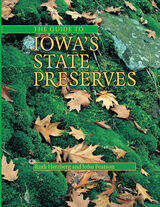 The Guide to Iowa's State Preserves
Herzberg, Ruth & John A. Pearson
University of Iowa Press, 2001 The Iowa state preserves system was created in 1965; a decade later, thirty preserves had been dedicated, including “six native prairies, a native White Pine stand, the state's only Sphagnum bog, a Balsam Fir stand, some of the oldest exposed rock outcrops in the world, an ancient fort, a fen, several Indian mound groups and a historical cemetery.” This new guide to all ninety Iowa state preserves—biological, geological, archaeological, historical, and scenic—describes the state's most treasured prairies and forests, quartzite outcrops and ice caves, and Indian mounds and wetlands as well as such historic sites as Fort Atkinson and Montauk. Each entry includes two-color, progressively scaled maps giving the location of the preserve within the state, within its county, relative to a nearby town (with a recommended driving route), and on the local landscape (using USGS 7.5-minute topo maps). Also included are written directions (using 911 street names and signs); a description of the preserve's size, features, and history; a list of nearby or similar preserves, parks, natural areas, and other attractions; recommended readings; and contact information. (There are a few exceptions for privately owned or fragile preserves.) For travelers, a map in the introduction numbers all the preserves both geographically and alphabetically by name. Although the preserves system emphasizes preservation rather than recreation, some preserves do have formal trails; some allow hunting, horseback riding, and canoeing; a few have museums or nature centers. This comprehensive guide allows visitors to plan active and informative visits to sites that highlight Iowa's natural and cultural heritage.
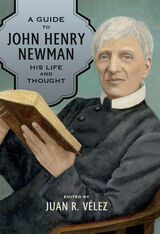 A Guide to John Henry Newman: His Life and Thought
Juan R. Velez
Catholic University of America Press, 2022 John Henry Newman (1801-1890), renowned thinker and writer, Anglican clergyman and later Roman Catholic priest and cardinal, has had a lasting influence on both Anglicans and Catholics, in the fields of literature, education, and theology. On October 13, 2019, Pope Francis declared him a saint in Rome.
Appealing to both the student and the scholar, A Guide to John Henry Newman provides a wide range of subjects on Newman’s life and thought relevant for our times and complementary to biographies of Newman. The contributors include authors from many different disciplines such as theology, education, literature, history, and philosophy, highlighting the wide range of Newman’s work. These authors offer a positive assessment of Newman’s thought and contribute to the discussion of the recent scholarship of others.
A Guide to John Henry Newman will interest educated readers and professors alike, and serve as a text for college seminars for the purpose of studying Newman.
A Guide to MATLAB® Object-Oriented Programming
Andy H. Register
The Institution of Engineering and Technology, 2007 A Guide to MATLAB® Object-Oriented Programming is the first book to deliver broad coverage of the documented and undocumented object-oriented features of MATLAB®. Unlike the typical approach of other resources, this guide explains why each feature is important, demonstrates how each feature is used, and promotes an understanding of the interactions between features.
Guide to Metering Systems: Specification, installation and use
Vic Tuffen
The Institution of Engineering and Technology, 2017 Metering systems are a key technology for the management of energy and environment services, and for cost allocation and resource efficiency of systems and subsystems in industrial and commercial applications. Good practice in the application of metering is fundamental to successful regulatory compliance, operational & resource efficiency and cost saving. This entails appropriate design, specification, installation and integration of metering systems as well as suitable management oversight and responsibility.
A Guide to Mexican Art: From Its Beginnings to the Present
Justino Fernández
University of Chicago Press, 1969 A Guide to Mexican Art, a survey of more than twenty centuries of art, has a double purpose. It provides an ample version of one of the great national arts by a leading art historian, and it serves simultaneously as a practical guide to the art's outstanding masterpieces. The Guide will thus be of value to specialists and students of Latin American art and to sightseers as an introduction and guide to the art and architecture of Mexico. To facilitate its use for the latter purpose, Professor Fernández has based his exposition on the sensitive analysis of works to be found almost exclusive in museums and public buildings accessible to the tourist.
The book was originally published in Spanish in 1958 and revised in 1961. This English translation, from the second edition has been brought up to date by the author and translator.
A Guide to Michigan's Endangered Wildlife
David C. Evers
University of Michigan Press, 1992 Endowed with an abundance of natural resources, Michigan is host to diverse wildlife. Wolves, lynx, eagles, loons, butterflies, and sturgeon make Michigan their home. Yet, through widespread logging, commercial harvest, wetland destruction, and water and land pollution, the precarious balance between nature and humans has been seriously disrupted to the point that many of the wildlife populations are struggling to survive. A Guide to Michigan's Endangered Wildlife profiles eighty-one of Michigan's endangered and threatened wildlife species. Detailed descriptive sketches are accompanied by beautiful color illustrations by some of Michigan's foremost nature photographers. Also featured are maps that delineate the distribution of endangered and threatened wildlife in Michigan.
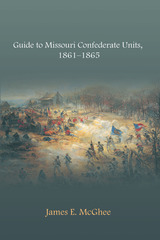 Guide to Missouri Confederate Units, 1861-1865
James E. McGhee
University of Arkansas Press, 2010 Tracing the origins and history of Missouri Confederate units that served during the Civil War is nearly as difficult as comprehending the diverse politics that produced them. Deeply torn by the issues that caused the conflict, some Missourians chose sides enthusiastically, others reluctantly, while a number had to choose out of sheer necessity, for fence straddling held no sway in the state after the fighting began. The several thousand that sided with the Confederacy formed a variety of military organizations, some earning reputations for hard fighting exceeded by few other states, North or South. Unfortunately, the records of Missouri's Confederate units have not been adequately preserved—officially or otherwise—until now. James E. McGhee is a highly respected and widely published authority on the Civil War in Missouri; the scope of this book is startling, the depth of detail gratifying, its reliability undeniable, and the unit narratives highly readable. McGhee presents accounts of the sixty-nine artillery, cavalry, and infantry units in the state, as well as their precedent units and those that failed to complete their organization. Relying heavily on primary sources, such as rosters, official reports, order books, letters, diaries, and memoirs, he weaves diverse materials into concise narratives of each of Missouri's Confederate organizations. He lists the field-grade officers for battalions and regiments, companies and company commanders, and places of origin for each company when known. In addition to listing all the commanding officers in each unit, he includes a bibliography germane to the unit, while a supplemental bibliography provides the other sources used in preparing this unique and comprehensive resource.
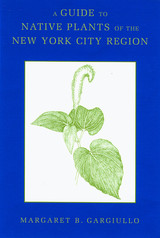 A Guide to Native Plants of the New York City Region
Gargiullo, Margaret B
Rutgers University Press, 2010 It is no secret that with each new office park, strip mall, and housing development that slices through the New York, New Jersey, and Connecticut landscape, more and more indigenous plant habitats are being destroyed. Concrete, after all, is not a friendly neighbor to vegetative life. Less common wisdom, however, holds that plants native to this region have been disappearing rapidly for a variety of reasons, and some of the causes can be avoided, even as construction projects continue to move in.
One of the most serious threats to indigenous plants is the introduction of invasive non-native species by landscapers after new developments are built. In this unique guide, ecologist Margaret B. Gargiullo presents a detailed look at the full scope of flora that is native to this region and available for propagation. Geared specifically for landscape architects, designers, land managers, and restorationists, this book offers practical advice on how to increase the amount of indigenous flora growing in the mepolitan area, and in some cases, to reintroduce plants that have completely disappeared.
More than one hundred line drawings of plants and their specific habitats, ranging from forests to beaches, help readers visualize the full potential for landscaping in the area. A separate entry for each plant also provides detailed information on size, flower color, blooming time, and its possible uses in wetland mitigation, erosion control, and natural area restoration. Some plants are also highlighted for their ability to thrive in areas that are typically considered inhospitable to greenery.
Easily searchable by plant type or habitat, this guide is an essential reference for everyone concerned with the region's natural plant life. Since most of the plants can also be grown well beyond the New York City metropolitan area, this book will also be useful for project managers doing restoration work in most of southern New England and the mid-Atlantic region, including Pennsylvania, Delaware, and Maryland.
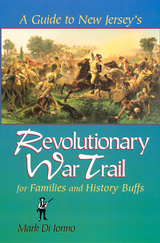 A Guide to New Jersey's Revolutionary War Trail: for Families and History Buffs
Di Ionno, Mark
Rutgers University Press, 2000 Hit the road with journalist Mark DiIonno as he takes you on a tour of New Jersey’s extraordinary Revolutionary War history. Listing more than 350 historic sites throughout the state, DiIonno has compiled the most complete guide ever to the Revolutionary War in the Garden State.
New Jersey’s role in the Revolutionary War is widely overlooked. Every school kid learns about the Boston Tea Party but not the Greenwich tea burning; and about the miserable winter at Valley Forge but not Jockey Hollow. Schools fund class trips to Philadelphia’s Independence Hall but not Princeton’s Nassau Hall. To find history in New Jersey, all you need is DiIonno’s book as your guide. His easy-to-read volume helps readers explore the cities and the countryside from Bergen to Cape May County to find out exactly what happened there during the Revolutionary War.
While previously published books center on the highlights — Fort Lee and Washington’s retreat across the state, victories at Trenton and Princeton, the brutal winter encampment at Jockey Hollow and the Battle of Monmouth — DiIonno fills in the blanks. Battlefields, churches, homes of the famous and infamous, cemeteries, parks, taverns, liberty poles, bridges, creeks, hills, museums, encampment sites, lighthouses, historical societies, walking trails, monuments, plaques—if it played a part in or commemorates the Revolutionary War in New Jersey, DiIonno tells you what happened there, the personalities involved, and how to see it for yourself.
The sites are conveniently cataloged by county, with a helpful summary of the area’s war history beginning each chapter. Each entry lists the town and directions to each site, and where appropriate, a complete address, telephone numbers, and hours of operation. Both public and private sites are described, and DiIonno advises readers of which private sites tours can be arranged.
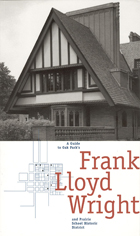 A Guide to Oak Park's Frank Lloyd Wright and Prairie School Historic District
Oak Park Historic Preservation Committee
University of Chicago Press, 2000 The Frank Lloyd Wright and Prairie School Historic District in suburban Oak Park, Illinois is home to a truly remarkable collection of late-nineteenth and early-twentieth-century residential architecture. Within this seventy-eight block district lies the world's greatest concentration of residences designed by Prairie School architects. It includes twenty-six Frank Lloyd Wright buildings, as well as more than sixty buildings designed by members of the Prairie School, all of which are documented in this new Guide.
Internationally famous as the birthplace of the Prairie style, Oak Park is less well-known for other historically significant types of well-preserved architecture, ranging from the simple farm houses of its early settlers to the grand estates of Chicago's industrial giants. In addition to their architectural merit, these structures provide an important context for understanding and appreciating the work of the Prairie School. The district as a whole encapsulates the major trends in residential American architecture of the late nineteenth and early twentieth century.
This guide to Oak Park's Frank Lloyd Wright and Prairie School Historic District includes five walking tours of this architecturally fascinating area. It features one hundred eighteen structures, an illustrated guide to architectural styles, architects' biographies, and detailed maps. With well over a hundred splendid black and white photographs, this elegantly produced guide is an indispensable reference for tourists, students, and aficionados world-wide.
A Guide to Oak Park's Frank Lloyd Wright and Prairie School Historic District was produced by the Oak Park Historic Preservation Committee.
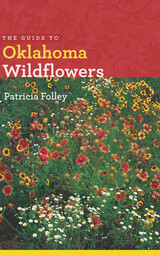 The Guide to Oklahoma Wildflowers
Patricia Folley
University of Iowa Press, 2012 With its Rocky Mountain foothills, hardwood forests, many rivers and streams, low mountains, sand dunes, cypress swamps, and wide swaths of rangeland and pastureland, the Great Plains state of Oklahoma is one of only four with more than ten ecoregions. Tallgrass, mixed-grass, and shortgrass prairies are native to large areas; rainfall and temperature are quite variable; and elevations drop from 5,000 to 300 feet. This diversity ensures that Oklahoma is host to hundreds of species of wildflowers, yet no guidebook to these botanical riches has been available in recent years. Patricia Folley’s beautifully photographed and carefully compiled Guide to Oklahoma Wildflowers fills this gap. Folley has photographed and described the two hundred wildflower species that are most commonly seen along roadsides and in parks throughout the state. She provides at least two photos for each plant, showing the entire plant as it occurs in the wild, outside of cultivation, along with a close-up of its flower. Each plant is keyed to a particular geographical location and a particular family, and an index to colors is a further aid to identification. If a species is native—such as big bluestem, the defining grass of Oklahoma’s tallgrass prairies—Folley presents this information in the text along with time of blooming, size and color of blooms, preferred habitat, and common and scientific names for all species. Oklahoma contains vast plains, elevated rocky plateaus, and forested mountains. Botanizing one’s way across the Sooner State reveals celestial lilies in the east, prickly poppies in the west, Dutchman’s breeches in the northeast, large-flowered evening primrose in central and southwest areas, Indian pink in the southeast, walking-stick cholla in the Panhandle, and purple prairie clover statewide. Gardeners, teachers, tourists, and naturalists of all levels of expertise will enjoy this guide’s concise text and vibrant photos.
 A Guide to Performing Systematic Reviews of Health and Disease
Kurinchi Gurusamy
University College London, 2025 From research questions to the final report, Kurinchi Gurusamy demystifies the process of conducting high-quality systematic reviews of health and disease.
Systematic reviews are the foundation of evidence-based healthcare, shaping treatment decisions and public health policies. A Guide to Performing Systematic Reviews of Health and Disease is a practical, step-by-step resource designed to help students and health professionals conduct high-quality reviews with confidence, even without extensive statistical training. This guide walks readers through the entire review process using free, open-source software. Each chapter features clear learning objectives and integrated videos to support hands-on learning.
Written by leading expert Kurinchi Gurusamy, this book simplifies complex research methodologies, making systematic reviews more accessible to a broad audience. Whether you are a novice researcher or a healthcare professional seeking to refine your evidence-based practice, this guide provides the essential tools to critically synthesize medical research. With an emphasis on clarity and real-world application, A Guide to Performing Systematic Reviews of Health and Disease is an indispensable resource for anyone looking to contribute to the ever-evolving landscape of healthcare research.
A Guide to Peril Strait and Wrangell Narrows, Alaska
William Morgan Hopkins
University of Alaska Press, 2020 Learning how to pilot a ship through Wrangell Narrows and Peril Strait is not an easy matter for a vessel operator new to the area, or even for those with experience. It takes time, patience, and a certain appetite for risk. The older generation of captains knew the channels in great detail, but they did not write anything down to leave for the next generation coming up through the ranks. Recognizing the wealth of the knowledge these navigators possessed in their memories, William Hopkins decided to document their charts and methods as he himself learned to maneuver ships through these important and narrow southeastern Alaska channels. A now retired captain who logged many voyages, Hopkins delineates the navigable courses for passing these treacherous waterways in this essential guide.
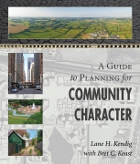 A Guide to Planning for Community Character
Lane H. Kendig with Bret Keast
Island Press, 2010 A Guide to Planning for Community Character adds a wealth of practical applications to the framework that Lane Kendig describes in his previous book, Community Character. The purpose of the earlier book is to give citizens and planners a systematic way of thinking about the attributes of their communities and a common language to use for planning and zoning in a consistent and reliable way. This follow-up volume addresses actual design in the three general classes of communities in Kendig's framework-urban, suburban, and rural.
The author's practical approaches enable designers to create communities "with the character that citizens actually want." Kendig also provides a guide for incorporating community character into a comprehensive plan. In addition, this book shows how to use community character in planning and zoning as a way of making communities more sustainable. All examples in the volume are designed to meet real-world challenges. They show how to design a community so that the desired character is actually achieved in the built result. The book also provides useful tools for analyzing or measuring relevant design features.
Together, the books provide a comprehensive treatment of community character, offering both a tested theory of planning based on visual and physical character and practical ways to plan and measure communities. The strength of this comprehensive approach is that it is ultimately less rigid and more adaptable than many recent "flexible" zoning codes.
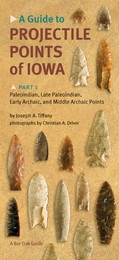 A Guide to Projectile Points of Iowa, Part 1: Paleoindian, Late Paleoindian, Early Archaic, and Middle Archaic Points
Joseph A. Tiffany
University of Iowa Press, 2009 “Projectile point” is a collective term for spear and dart points, arrowheads, and hafted knives. The many Native Americans who have inhabited Iowa shaped points primarily of various cherts and chalcedonies found locally or traded regionally. The single point types illustrated in this two-part guide, the first to provide color photographs to scale for all types found in Iowa, show the wide range of variability as forms evolved from the Paleoindian period, 11,100–10,750 BC, to the Late Prehistoric period, AD 1000–1200.
The two beautifully illustrated parts depict a total of sixty-one full-size stone point types in color by archaeological period. References are provided for those wishing to learn more about each type shown. Archaeologist Joseph Tiffany lists the stone type for each point as well as its estimated range of use based on calibrated radiocarbon age, catalog number, and the county where it was found. By providing actual-size color images of the typed points, each part is very easy to use in the field, lab, or classroom.
From the highly finished Clovis points of the Paleoindian period to the delicate notched and stemmed points of the Woodland period, these tangible remnants of vanished cultures reveal the huge changes in the lifeways of Iowa’s native populations over time. Lay and professional archaeologists, collectors, students, and enthusiasts will appreciate the beauty of the photos and the usefulness of the information in this pocket guide to Iowa projectile points.
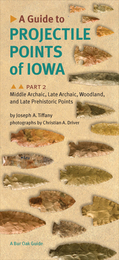 A Guide to Projectile Points of Iowa, Part 2: Middle Archaic, Late Archaic, Woodland, and Late Prehistoric Points
Tiffany, Joseph A.
University of Iowa Press, 2009 “Projectile point” is a collective term for spear and dart points, arrowheads, and hafted knives. The many Native Americans who have inhabited Iowa shaped points primarily of various cherts and chalcedonies found locally or traded regionally. The single point types illustrated in this two-part guide, the first to provide color photographs to scale for all types found in Iowa, show the wide range of variability as forms evolved from the Paleoindian period, 11,100–10,750 BC, to the Late Prehistoric period, AD 1000–1200.
The two beautifully illustrated parts depict a total of sixty-one full-size stone point types in color by archaeological period. References are provided for those wishing to learn more about each type shown. Archaeologist Joseph Tiffany lists the stone type for each point as well as its estimated range of use based on calibrated radiocarbon age, catalog number, and the county where it was found. By providing actual-size color images of the typed points, each part is very easy to use in the field, lab, or classroom.
From the highly finished Clovis points of the Paleoindian period to the delicate notched and stemmed points of the Woodland period, these tangible remnants of vanished cultures reveal the huge changes in the lifeways of Iowa’s native populations over time. Lay and professional archaeologists, collectors, students, and enthusiasts will appreciate the beauty of the photos and the usefulness of the information in this pocket guide to Iowa projectile points.
Guide to Prosumer Electrical Installations
The Institution of Engineering and Technology
The Institution of Engineering and Technology, 2025 The purpose of this guide is to provide designers, installers, and practitioners with a clear understanding of the requirements and typical modes of operation for a Prosumer's Electrical Installation (PEI). It outlines the terminology and design philosophy of a PEI, including its various types and modes of operation, and explains the integration of its components. Additionally, the guide offers insights into potential electrical safety issues associated with a PEI and details the specific requirements of BS 7671 to mitigate these risks. It also discusses the technical challenges related to PEI and describes the role of energy management systems and the necessary interfaces to optimize the operation of a PEI.
A Guide to Scenes of Daily Life on Athenian Vases
John H. Oakley
University of Wisconsin Press, 2020 Painted vases are the richest and most complex images that remain from ancient Greece. Over the past decades, a great deal has been written on ancient art that portrays myths and rituals. Less has been written on scenes of daily life, and what has been written has been tucked away in hard-to-find books and journals. A Guide to Scenes of Daily Life on Athenian Vases synthesizes this material and expands it: it is the first comprehensive volume to present visual representations of everything from pets and children's games to drunken revelry and funerary rituals.
John H. Oakley's clear, accessible writing provides sound information with just the right amount of detail. Specialists of Greek art will welcome this book for its text and illustrations. This guide is an essential and much-needed reference for scholars and an ideal sourcebook for classics and art history.
Guide to Smart Homes for Electrical Installers
The Institution of Engineering and Technology
The Institution of Engineering and Technology, 2021 Anecdotal evidence suggests that it's often the latest trendy product that is currently driving homeowners to investigate smart home technologies. These products are not all plug and play and installing them may require input from competent electrical installers.
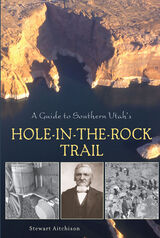 A Guide to Southern Utah's Hole-in-the-Rock Trail
Stewart Aitchison
University of Utah Press, 2005 In 1879, 230 settlers in southwestern Utah heeded the call from leaders of the Church of Jesus Christ of Latter-day Saints to pull up stakes and move to the distant San Juan country of southeastern Utah. Their year-long journey became one of the most extraordinary wagon trips ever undertaken in North America, their trail one of peril, difficulty, and spectacular vistas. Beginning in Cedar City, Utah, this trail crosses today’s Dixie National Forest, skirts Bryce Canyon National Park, bisects the Grand Staircase-Escalante National Monument, crosses the Glen Canyon National Recreation Area, and comes close to Natural Bridges National Monument on its way to Bluff, Utah.
Though the trail that these devoted pioneers broke across raw frontier was used for several years afterward, no highway was built over most of the route because it was deemed too rugged for modern vehicles. In addition to the historical value of the story of these pioneers, this guide includes road logs, maps, and hiking trails along the historic trail. It also points out fascinating natural history along the way, making A Guide to Southern Utah’s Hole-in-the-Rock Trail a significant reference for a variety of readers.
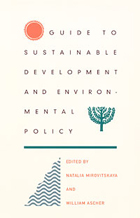 Guide to Sustainable Development and Environmental Policy
Natalia Mirovitskaya and William L. Ascher, eds.
Duke University Press, 2001 The Guide to Sustainable Development and Environmental Policy is a comprehensive presentation of definitions, philosophies, policies, models, and analyses of global environmental and developmental issues. With a wealth of comparative, multidisciplinary, and geographically varied perspectives on environmental governance, it also provides detailed and balanced discussions about specific environmental issues.
The guide combines formal, objective entries with critical commentaries that emphasize different opinions and controversies. With succinct explanations of more than a thousand terms, thoughtful interpretations by international experts, and helpful cross-referencing, this resource is designed to serve as a roadmap for understanding the issues and debates in the overlapping fields of environment and development. Intended for use by activists, journalists, policymakers, students, scholars, and interested citizens, the Guide to Sustainable Development and Environmental Policy will be a helpful tool for anyone trying to get a comprehensive look at the many environmental organizations, schools of thought, development programs, international environmental treaties, conventions, and strategies that have proliferated in the past few decades.
Guide to Temporary Electrical Systems: Design, management and deployment
James Eade
The Institution of Engineering and Technology, 2025 This book provides a detailed explanation of the application of both BS 7671 and BS 7909 to events and other relevant industry guidance. It is a guide for all those involved in the design and use of temporary electrical and power systems, including but not limited to deployment at exhibitions, agricultural shows and outdoors fairs, concerts, theatrical events, film and TV broadcasting, festivals, as well as temporary buildings and structures. It illustrates what should be considered during planning and design, and goes beyond the scope of the regulations on important topics such as stage sets, equipment testing, and considerations for the electrical installations in venues that host temporary events.
A Guide to the Campus of the University of Michigan
Margo MacInnes
University of Michigan Press, 1979 The Ann Arbor campus of the University of Michigan has a blend of architecture that is as varied as is the University itself. This convenient and selective guide describes the most beautiful, interesting, and historic buildings on a campus rich in tradition.Photographs and an impressive aerial map help the visitor around a sometimes baffling complex of buildings, streets, and walkways. The text, compiled and written by Margo MacInnes with the assistance of Wystan Stevens, will provide hours of reading enjoyment. The book also offers a historical perspective on the University's other points of interest, such as Matthaei Botanical Gardens. No other guidebook provides you with such inclusive information about the University of Michigan.
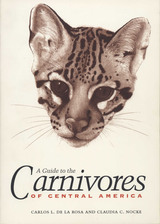 A Guide to the Carnivores of Central America: Natural History, Ecology, and Conservation
By Carlos L. de la Rosa and Claudia C. Nocke
University of Texas Press, 2000 Carnivores such as pumas, jaguars, and ocelots have roamed the neotropical forests of Central America for millennia. Enshrined in the myths of the ancient Maya, they still inspire awe in the region's current inhabitants, as well as in the ecotourists and researchers who come to experience Central America's diverse and increasingly endangered natural environment.
This book is one of the first field guides dedicated to the carnivores of Central America. It describes the four indigenous families—wild cats, raccoons and their relatives, skunks and their relatives, and wild canids—and their individual species that live in the region. The authors introduce each species by recounting a first-person encounter with it, followed by concise explanations of its taxonomy, scientific name, English and Spanish common names, habitat, natural history, and conservation status. Range maps show the animal's past and current distribution, while Claudia Nocke's black-and-white drawings portray it visually.
The concluding chapter looks to the carnivores' future, including threats posed by habitat destruction and other human activities, and describes some current conservation programs. Designed for citizens of and visitors to Central America, as well as specialists, this book offers an excellent introduction to a group of fascinating, threatened, and still imperfectly understood animals.
Guide to the Catholic Sisterhoods in the United States, Fifth Edition
Thomas P. McCarthy, C.S.V.
Catholic University of America Press, 2002 In this edition, the communities of sisters have been arranged according to their general apostolic work, viz., contemplative, domestic, foreign and home missions, nursing, retreat and social work, teaching, and writing and publications.
Guide to the Colorado Ghost Towns and Mining Camps: And Mining Camps
Perry Eberhart
Ohio University Press, 1969 "This is not a history book. Rather it is a directory of towns, and compilation of known information about those towns. In undertaking the stud, I was amazed at the amount of legend and contradictory information Colorado history has collected in just one hundred years. Who was it that said: 'History is the perpetuation of saleable gossip'? (Perhaps, nobody has said it yet. In that case, it's mine, all mine.)
"As of this moment, this is the most complete compilation of Colorado mining towns—ghost or going—available.
"For the fourth edition, over 100 towns have been added. Also, I have included a new chapter (XXVI. Addendum, page 466), the first couple of pages of which can well be read as a second Preface to the book."
— Perry Eberhart, Preface, 1959 and 1969
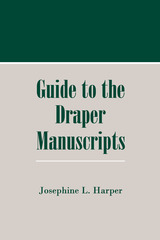 Guide to the Draper Manuscripts
Josephine L. Harper
Wisconsin Historical Society Press, 1983 In the mid-nineteenth century the Wisconsin Historical Society's first director, Lyman C. Draper, gathered outstanding materials such as the Daniel Boone papers, which include Draper's interviews with Boone's son, and the papers of Revolutionary War hero George Rogers Clark. These two collections alone are of vast significance to frontier history before 1830, but the full collection comprises nearly five hundred volumes of records, including military and government records, interviews, Draper's own research notes, and rare personal letters. For scholars, genealogists, and local historians, the Draper papers offer a wealth of information on the social, economic, and cultural conditions experienced by our frontier forebears. The 180-page index lists thousands of names and is an indispensable guide for all who wish to use the collection, which is available in libraries across the country on microfilm.
 Guide to the Flowers of Western China
Christopher Grey-Wilson and Phillip Cribb
Royal Botanic Gardens, Kew, 2011 Unrivaled in the temperate latitudes of the world, China’s rich flora comprises 30,000 species of plants, and nowhere is this floral richness more evident than in western China. With its lush forests, meandering rivers, and majestic mountains, the west of China has been a center of plant exploration for over two centuries, giving rise to many well-known species of trees, shrubs, perennials, and bulbs that populate our parks and botanical institutes, including rhododendron, orchids, peonies, and roses.
Guide to the Flowers of Western China describes and illustrates more than two thousand species, from the common to the endemic to the extremely rare. Plant families are arranged following the latest DNA-based classification, making this pictorial guide— the largest and most comprehensive on western China ever published—essential for gardeners and plant scientists.
Celebrating the wealth of western China’s vast flora, this magnificent volume will enable the horticulturally inclined traveler (or armchair traveler) to identify many of the plants encountered in the wild.
Guide to the Flowers of Western China
Christopher Grey-Wilson and Phillip Cribb
Royal Botanic Gardens, Kew, 2023 A completely revised and updated second edition of the essential field guide and reference work.
Since the publication of the first edition of Guide to the Flowers of Western China in 2011, there have been great strides in knowledge of the flora of China through international collaboration. Many plants included in the first edition have been revisited in the wild, while areas hitherto inaccessible have opened up, if sometimes only temporarily. Great advances in systematic botany have occurred since the publication of the first edition, particularly with the widespread availability of rapid DNA analysis. The result of this has been an influx of new photographs and data, and the need for a second edition of Guide to the Flowers of Western China.
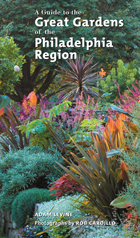 A Guide to the Great Gardens of the Philadelphia Region
Adam Levine
Temple University Press, 2007 Finally, for every resident and visitor to the region, a comprehensive guide to the gardens of eastern Pennsylvania, southern New Jersey, and northern Delaware. Magnificently illustrated with nearly 200 full color photographs, A GUIDE TO THE GREAT GARDENS OF THE PHILADELPHIA REGION provides essential information on how to locate and enjoy the finest gardens the area has to offer.
As the horticultural epicenter of the United States, Philadelphia and the surrounding towns, suburbs, and countryside are blessed with more public gardens in a concentrated area than almost any other region in the world. Stretching from Trenton, New Jersey through Philadelphia and down to Newark, Delaware, this area (often called the Delaware Valley) offers more horticultural riches than a visitor can possibly see even in a coupl of weeks of hectic garden-hopping.
In A GUIDE TO THE GREAT GARDENS OF THE PHILADELPHIA REGION you will find:
Detailed coverage of almost 100 gardens
Maps to indicate where area gardens are in relation to each other to plan day trip itineraries
Key information about each major garden, including hours, fees, time needed for a tour, history, acreage, and special features
Over a dozen gardens that have never before been featured in any garden guidebook
Arranged by interest, to help guide readers to gardens that will most meet their needs
Notations about historical houses, cafes/restaurants, gift shops, and chidren's features at each major garden
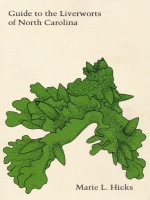 Guide to the Liverworts of North Carolina
Marie L. Hicks
Duke University Press, 1992 North Carolina is home to 66 genera and 195 species of liverworts--small, mosslike plants occupying moist microhabitats that form an inconspicuous part of the vegetation. Marie L. Hicks’ Guide to the Liverworts of North Carolina provides the first complete field guide to the hepatic flora in North Carolina. The volume offers a key to genera, species descriptions, distribution maps, a glossary, and 120 original drawings of liverworts as they appear in North Carolina.
North Carolina’s varied physiography creates a diversity of flora, ranging from boreal plants in the mountains to subtropical plants in the coastal plain. Collections of hepatics in North Carolina have been sporadic over the years, and knowledge of their distribution within the state has accumulated gradually. Guide to the Liverworts of North Carolina builds on earlier field studies, including those of Hugo L. Blomquist and R. M. Schuster, to provide keys and illustrations to aid identification. This important, comprehensive field guide will also be useful in states adjoining North Carolina and is designed for students, botanists, and all those interested in identifying local liverworts.
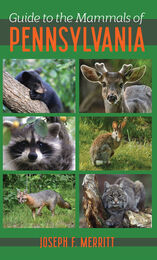 Guide to the Mammals of Pennsylvania
Joseph Merritt
University of Pittsburgh Press, 1987
From the tiny shrew to the black bear, Pennsylvania’s hills and valleys are teeming with sixty-three species of wild mammals. Many of these animals are rarely seen except when pursued by an interested biologist, mammologist, or nature photographer. Now, with the publication of this book, student, scholar, and nature lover alike will have a ready reference to distinguish between a deer mouse and a white-footed mouse, to identify raccoon tracks, and to learn about Pennsylvania’s other inhabitants.
An attractive backpack-size volume, written in lively prose, the Guide to the Mammals of Pennsylvania opens with a short introduction to Pennsylvania’s environment and the characteristics defining a mammal. The bulk of the book consists of species accounts of the mammals grouped into families and orders. Each account includes a short list of data, a Pennsylvania range map, a North American range map, and a narrative of the physical, ecological, and behavioral characteristics of the species.
Exciting photographs of each of the species in its natural habitat, 17 in color, and drawings of animal tracks are especially useful for identification, and a glossary and a bibliography provide definitions and references for the serious reader. Naturalists, whether amateur or professional, will find the book useful in the field; it will be an indispensable tool in the classroom.
A Guide to the Measurement of Animal Bones from Archaeological Sites
Angela von den Driesch
Harvard University Press, 1976 Von den Driesch's handbook is the standard tool used by faunal analysts working on animal and bird assemblages from around the world. Developed for the instruction of students working on osteoarchaeological theses at the University of Munich, the guide has standardized how animal bones recovered from prehistoric and early historic sites are measured.
A Guide to the Spring Flowers of Minnesota
Carl Rosendahl
University of Minnesota Press, 1937
A Guide to the Spring Flowers of Minnesota was first published in 1937. Minnesota Archive Editions uses digital technology to make long-unavailable books once again accessible, and are published unaltered from the original University of Minnesota Press editions.This well-known students’ handbook contains fully illustrated keys, a glossary, and indexes of the common and scientific names of both the native and the cultivated flowers of the state. While the authors make no claim to its completeness beyond the boundaries of Minnesota, the guide will be found useful in adjacent states.
 Guide to the Study of United States Imprints: Volumes 1 and 2
G. Thomas Tanselle
Harvard University Press, 1971 This book provides a basic guide to the study of the printed matter which has been produced in the United States. No comprehensive attempt has been made to record the great bulk of research in this field. Recognizing the need for an up-to-date guide to such investigations, G. Thomas Tanselle has compiled a listing of the principal material dealing with printing and publishing in this country.
In his Introduction, Tanselle surveys the research which has attempted to trace the history of printing and publishing in America from its inception to the present and explains how this material can be utilized effectively.
In nine carefully arranged categories he covers bibliographies of imprints of particular localities; bibliographies of works in particular genres; listings of all editions and printings of works by individual writers; copyright records; catalogues of auction houses, book dealers, exhibitions, institutional libraries, and private collections; retrospective book-trade directories; studies of individual printers and publishers; general studies of printing and publishing; and checklists of secondary material.
From the mass of material, an appendix selects 250 titles. Although the work is arranged so that the reader may easily locate relevant sections, a comprehensive index provides further aid in finding individual items.
“A successful checklist,” writes the author, “is not merely a work to be consulted for information but also a nucleus around which additional information can be gathered in a meaningful way; it provides a framework into which the community of workers in a field can place further references in an organized fashion.”
Guide to the Study of United States Imprints is a reference tool designed to serve both as a guide to research and as a practical manual for use in identifying, cataloguing, and recording printed matter. It will be of enormous value to scholars in American literature, history, and bibliography, to librarians, typographers, and bibliophiles, and to antiquarian book dealers and book collectors.
 Guide To The Trees Of Utah
Michael Kuhns
Utah State University Press, 1998 For any tree enthusiast, be it homeowner, landscaper, recreationist, traveler, or student, who has needed a comprehensive, user-friendly guide to the trees of Utah and the Intermountain West, this new guide is the answer. Tree specialist Michael Kuhns, through extensive research, has compiled a comprehensive list of virtually every native and introduced tree species from the eastern slope of the Rockies westward to the Sierra Nevada, and from north-central Oregon, the Salmon River region, and Yellowstone southward to the Grand Canyon and northern New Mexico. Included in the guide are simple and easy-to-use identification and classification keys, which are accompanied by hundreds of illustrations that introduce basic information on tree anatomy, climate/hardiness zones, and the individual species. Accessible and informative, this book is a welcome addition to the library of any reader wanting basic information on the vast inventory of trees in this region.
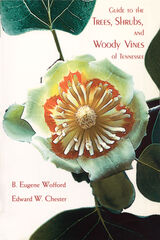 Guide to the Trees, Shrubs, and Woody Vines of Tennessee
S. Eugene Wofford
University of Tennessee Press, 2002 Tennessee is home to more than four hundred species of woody plants, but until now there has been no comprehensive guide to them. This work fills that gap, as B. Eugene Wofford and Edward W. Chester provide identification keys to all native and naturalized species of trees, shrubs, and woody vines found in the state.
The book is organized by plant types, which are divided into gymnosperms and angiosperms. For each species treated, the authors include both scientific and common names, a brief description, information on flowering and fruiting seasons, and distribution patterns. Photographs illustrate more than ninety five percent of species, and the text is fully indexed by families and genera, scientific names, and common names. A glossary is keyed to photographs in the text to illustrate definitions.
In their introduction, Wofford and Chester provide an overview of the Tennessee flora and their characteristics, outline Tennessee’s physiographic regions, and survey the history of botanical research in the state. The authors also address the historical and environmental influences on plant distribution and describe comparative diversity of taxa within the regions.
Guide to Trees, Shrubs, and Woody Vines of Tennessee will be a valuable resource and identification guide for professional and lay readers alike, including students, botanists, foresters, gardeners, environmentalists, and conservationists interested in the flora of Tennessee.
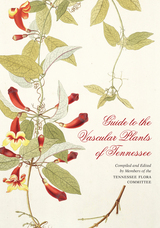 Guide to the Vascular Plants of Tennessee
Edward W. Chester
University of Tennessee Press, 2015 The product of twenty-five years of planning, research, and writing, Guide to the Vascular Plants of Tennessee is the most comprehensive, detailed, and up-to-date resource of its kind for the flora of the Volunteer State, home to nearly 2,900 documented taxa. Not since Augustin Gattinger’s 1901 Flora of Tennessee and a Philosophy of Botany has a work of this scope been attempted.
The team of editors, authors, and contributors not only provide keys for identifying the major groups, families, genera, species, and lesser taxa known to be native or naturalized within the state—with supporting information about distribution, frequency of occurrence, conservation status, and more—but they also offer a plethora of descriptive information about the state’s physical environment and vegetation, along with a summary of its rich botanical history, dating back to the earliest Native American inhabitants.
Other features of the book include a comprehensive glossary of botanical terms and an array of line drawings that illustrate the identifying characteristics of vascular plants, from leaf shape and surface features to floral morphology and fruit types. Finally, the book’s extensive keys are indexed by families, scientific names, and common names. The result is a user-friendly work that researchers, students, environmentalists, foresters, conservationists, and indeed anyone interested in Tennessee and its botanical legacy and resources will value for years to come.
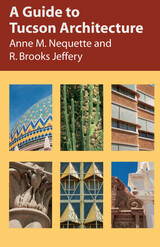 A Guide to Tucson Architecture
Anne M. Nequette
University of Arizona Press, 2002 Tucson is a city rich in architectural heritage spanning three cultures, with a history of human settlement that makes it one of the oldest continually inhabited cities in the United States. Hispanic barrios, American architectural forms, and remnants of a prehistoric Native American past give Tucson a unique and eclectic identity unlike any other city. This book is a comprehensive, richly illustrated guide to Tucson's significant historic and contemporary architectural resources—not only buildings, but ruins, open spaces, landscapes, and other elements that define the city’s built environment. It captures all facets of Tucson’s architecture, from one-of-a-kind homes on Main Avenue and historic downtown buildings to destination resorts in the Catalina Foothills and other modern structures. In this book readers will find:
- walking and driving tours of fourteen areas, complete with maps, beginning with central neighborhoods such as Barrio Historico and Armory Park and moving on to the rapidly expanding outlying areas
- annotated descriptions of individual structures—residences, schools, churches, government buildings, offices, commercial establishments, and others—enhanced by more than 120 photographs
- profiles of prominent Tucson architects, including Henry Trost, Josias Joesler, and Judith Chafee
- a guide to architectural styles found in Tucson—with examples—and a glossary of terms. A Guide to Tucson Architecture is the only book to offer such an extensive guided tour of one of America's favorite destination cities, capturing both its historic character and its dynamic growth. Through it, readers will appreciate the holistic balance of influences that has created Tucson's unique architectural expression and that defines its modern identity.
 A Guide to Useful Evaluation of Language Programs
John McE. Davis and Todd H. McKay, Editors
Georgetown University Press Departments and language programs often are asked to evaluate the efficacy of their own programs and make curricular decisions on the basis of evidence. This guide, designed to help language educators meet the needs of program evaluation and assessment often requested by their institutions, provides step-by-step advice to help language educators conduct evaluation and assessment and to show how it can lead to meaningful programmatic decisions and change. With discussions about evaluation planning, advice for selecting data-collection tools, explanations for data analysis, examples based on actual evaluations, and more, this book provides everything you need to complete a successful language program evaluation that will give educators useful data on which to base curricular decisions. This short book is practical and timely and will find an audience in instructors of all languages and all levels.
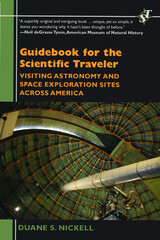 Guidebook for the Scientific Traveler: Visiting Astronomy and Space Exploration Sites across America
Nickell, Duane S
Rutgers University Press, 2008 Finding all the fascinating scientific sites to visit throughout America can be a daunting task. This guidebook does all the work for you. The first in a series of travel books that will celebrate science and technology in America, Guidebook for the Scientific Traveler describes astronomy and space-related museums and attractions that conventional travel guides tend to ignore. So, gas up the car, grab some snacks for the road, and get started on the voyage. Written in clear, easy-to-read language, Guidebook for the Scientific Traveler lists more than 50 of the most important and intriguing astronomical and space-related sites in the United States. The book encompasses both popular and obscure places of interest, all of which are open to the public. Grouping the attractions by theme—such as Native American astronomy, optical and radio telescopes, NASA and space exploration, and space rocks—Duane S. Nickell provides a scientific and historical overview of each theme followed by detailed descriptions of the related sites within that theme. With over 40 illustrations, the book gives readers a visual understanding of what they will experience at most of the sites. For those readers who want to use the book as a trip planner, Nickell also includes a state-by-state listing of the attractions and identifies “must-see” exhibits at many of the space museums featured. Travelers and armchair tourists alike will be entertained by the illustrations and scientific descriptions of these “out of this world” attractions. -Perfect for science and astronomy enthusiasts -Contains detailed visitorinformation on each site -Includes over 50 of the top astronomy and space-related sites -Filled with interesting descriptions of all sites -Over 40 photographs -State-by-state appendix
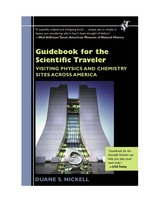 Guidebook for the Scientific Traveler: Visiting Physics and Chemistry Sites Across America
Nickell, Duane S
Rutgers University Press, 2010 Imagine visiting a top-secret government lab, one that was a key site for the development of nuclear weapons and nuclear fusion technology in the twentieth century. Well, even in today's world of color-coded security levels, the doors of the Lawrence Livermore National Laboratory in California are open to you. And it's just one of the many surprising stops along the way in Duane S. Nickell's captivating new edition of the Scientific Traveler series, Guidebook for the Scientific Traveler: Visiting Physics and Chemistry Sites across America.
Are you in the mood for a trip to the Titan Missile Museum in Tucson? Want to spend some time at the Fermi National Accelerator Center near Chicago? Perhaps quench your thirst for knowledge and discovery at the Anheuser-Busch Brewery in St. Louis, where brewers are chemists at heart? Set your own pace. As an active participant or living room traveler, you'll be mesmerized as Nickell leads you on a tour of physics and chemistry sites.
Written in an easy-to-read and accessible style, this comprehensive guide is a practical and fun way to promote scientific literacy. You'll meet some of the world's great physicists, engineers, and chemists as you turn pages filled with more than fifty photographs. Organized into chapters on individuals, places, and sites--from universities of science to national laboratories, particle accelerators to energy labs and beyond--Nickell illuminates the history of each topic and paints a panorama of stunning achievements in physics and chemistry.
Whether you're traveling in California or Maine, or taking to the road in Texas or Illinois, Nickell helps complete your trip with a state-by-state list of monumental sites and resources. From the east coast to the west, north by northwest, or south in search of the Florida Solar Power Energy Center, you'll enjoy all your scientific travels with Visiting Physics and Chemistry Sites across America.
A Guidebook To Historic Western Pennsylvania: Revised Edition
Helene Smith
University of Pittsburgh Press, 1991
Since its first publication in 1976, this guide - with nearly thirty thousand copies sold - has become the standard book for exploring the twenty-six counties of western Pennsylvania. Yet in the past fourteen years, many sites have been lost through fire, demolition, or neglect - and many other sites of historical interest have been discovered and documented. Now Helene Smith and George Swetnam have completely revised the text, updating the capsule histories, the site descriptions, and location directions (including all the new Pennsylvania road numbers), and adding several hundred new entries.
Guidebooks for the Dead
Cynthia Cruz
Four Way Books, 2020 In Guidebooks for the Dead, Cynthia Cruz returns to a familiar literary landscape in which a cast of extraordinary women struggle to create amidst violence, addiction and poverty. For Marguerite Duras, evoked here in a collage of poems, the process of renaming herself is a “Quiet death,” a renewal she envisions as vital to her evolution. In “Duras (The Flock),” she is “high priestess” to an imagined assemblage of women writers for whom the word is sustenance and weapon, “tiny pills or bullets, each one packed with memory, packed with a multitude of meaning.” Joining them is the book’s speaker, an “I” who steps forward to declare her rightful place among “these ladies with smeared lipstick and torn hosiery. . . this parade of wrong voices.” Guidebooks for the Dead is both homage to these women and a manifesto for how to survive in a world that seeks to silence those who resist.
 The Guided Mind: A Sociogenetic Approach to Personality
Jaan Valsiner
Harvard University Press, 1998 How is something as broad and complex as a personality organized? What makes up a satisfactory theory of personality? In this ambitious book, Jaan Valsiner argues for a theoretical integration of two long-standing approaches: the individualistic tradition of personalistic psychology, typified by the work of William Stern and Gordon Allport, and the semiotic tradition of cultural-historical psychology, typified by the work of L. S. Vygotsky. The two are brought together in Valsiner's theory, which highlights the sign-constructing and sign-using nature of all distinctively human psychological processes.
Arguing that the individualistic and the cultural traditions differ largely in emphasis, Valsiner unites them by focusing on the intricate relations between personality and its social context, and their interplay in personality development. The semiotic devices internalized from the social environment shape an individual's development, and the flow of thinking, feeling, and acting. Valsiner uses this theoretical approach to illuminate two remarkable, and remarkably different, phenomena: letters from the mother of Allport's college roommate, a key empirical case in Allport's theory, and the ritual movements of a Hindu temple dancer. Valsiner shows how both exemplify basic human tendencies for the cultural construction of life courses.
The Guided Mind shows the fundamental unities in the vastly diverse phenomenon of human personality.
Guided Missile Frigate Tromp
Jantinus Mulder
Amsterdam University Press, 2023 Both Tromp-class frigates entered service in 1975/-76. Their primary task was area air defense. They acted as flagships for the COMNLTG (Commander Netherlands Task Group). Their large radome (which housed a 3D radar antenna) is why the ships had the nickname ‘Kojak’, after the bald-headed actor in the famous crime tv-series.
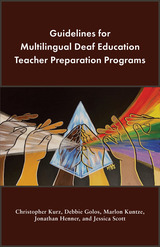 Guidelines for Multilingual Deaf Education Teacher Preparation Programs
Christopher Kurz
Gallaudet University Press, 2021 This publication aims to support the effort to create transformative changes within Deaf education teacher training programs in the United States and Canada. It is a critical time to reexamine these programs and ensure the provision of the highest quality education to prepare future teachers to meet the needs of Deaf students in today’s increasingly multilingual and multimodal climate. Deaf education teacher preparation programs need to understand the multiple and intersecting identities of their students to be able to provide education that is equitable for all. Programs that approach Deaf education through a multilingual lens are in a better position to produce teachers who are knowledgeable about the diverse language and cultural needs of Deaf students. The guidelines set forth in this volume can be used to help develop new undergraduate and graduate teacher training programs or to transition an existing program. The key goals and anticipated outcomes of this volume are: - to increase the number of multilingual Deaf education teacher preparation programs;
- to increase the number of fluent language and cultural models for Deaf children in varying educational environments;
- to increase the number of high quality teachers with competencies in multilingual strategies;
- to increase collaboration between teacher training programs; and
- to increase research and professional development focused in multilingual pedagogies.
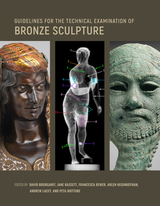 Guidelines for the Technical Examination of Bronze Sculpture
David Bourgarit
J. Paul Getty Trust, The, 2023 The essential reference for anyone engaged in the material study of cast bronze sculpture.
Since the fourth millennium BCE, bronze has been the preferred medium for some of the most prestigious and sacred works of art. But only through interdisciplinary research can the fabrication of these extraordinary objects be properly investigated, interpreted, and documented. This innovative publication bridges the expertise of myriad art-technological specialists to create a new framework for advancing the understanding of bronze sculpture.
Essential reading for curators, conservators, scientists, archaeologists, sculptors, metallurgists, founders, dealers, collectors, and anyone interested in the life cycle of a bronze, this volume explains how to identify the evidence of process steps, metals used, casting defects, and surface work and alterations before moving on to address analytical techniques ranging from visual exams to imaging, material analyses, and dating. The guidelines are accompanied by detailed illustrations, including videos, charts, and animations; a robust vocabulary, ensuring precision across English, German, French, Italian, and Chinese; a diverse selection of case studies; and a comprehensive bibliography.
The free online edition of this open-access publication is available at getty.edu/publications/bronze-guidelines/ and includes videos and zoomable illustrations. Also available are free PDF and EPUB downloads of the book.
Guiding to a Blessed End: Andrew of Caesarea and His Apocalypse Commentary in the Ancient Church
Eugenia Scarvelis Constantinou
Catholic University of America Press, 2013 In this interesting and insightful work, Eugenia Scarvelis Constantinou, the leading expert on Andrew of Caesarea and the first to translate his Apocalypse commentary into any modern language, identifies an exact date for the commentary and a probable recipient. Her groundbreaking book, the first ever written about Andrew, analyzes his historical milieu, education, style, methodology, theology, eschatology, and pervasive and lasting influence. She explains the direct correlation between Andrew of Caesarea and fluctuating status of the Book of Revelation in Eastern Christianity through the centuries.
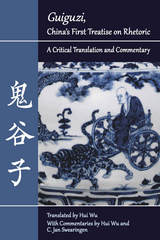 "Guiguzi," China's First Treatise on Rhetoric: A Critical Translation and Commentary
Translated by Hui Wu / With Commentaries by Hui Wu and C. Jan Swearingen
Southern Illinois University Press, 2016 When Gorgias, Plato, and Aristotle were discussing and defining rhetoric in ancient Greece, many students in China, including Sun Bin, a descendent of Sun Tzu, who wrote The Art of War, were learning the techniques of persuasion from Guiguzi, “the Master of the Ghost Valley.” This pre–Qin dynasty recluse provided the basis for what is considered the earliest Chinese treatise devoted entirely to the art of persuasion. Called Guiguzi after its author, this translation of the received text provides an indigenous rhetorical theory and key persuasive strategies, some of which are still used by those involved in decision making and negotiations in China today. In “Guiguzi,” China’s First Treatise on Rhetoric, Hui Wu and C. Jan Swearingen present a new critical translation of this foundational work, which has great historical significance for the study of Chinese rhetoric and communication and yet is little known to Western readers.
Wu’s translation includes footnotes that incorporate both past and present scholarly commentary, and is accompanied by a prefatory introduction that situates Guiguzi in the sociopolitical and cultural realities of ancient China, and a glossary of rhetorical terms used in the treatise. Swearingen presents a comparative study suggesting the similarities and differences between emerging Greek and Chinese rhetorics during the same period, including the cultural contexts of warring states and emergent empires that surrounded each.
“Guiguzi,” China’s First Treatise on Rhetoric combines a new translation of a historically significant text with scholarly analysis and critical apparatus that will contribute to the emerging global understanding of Chinese rhetoric and communication.
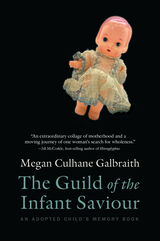 The Guild of the Infant Saviour: An Adopted Child's Memory Book
Megan Culhane Galbraith
Ohio State University Press, 2021 “In its generous scope, Galbraith’s book honors the depth and mystery of all human lives, whether we grew up with birth parents or not.” —Mary Gaitskill
Shortly before Roe v. Wade legalized abortion, adoptee Megan Culhane Galbraith was born in a Catholic charity hospital in New York City to a teenaged resident of the Guild of the Infant Saviour, a home for unwed mothers. Decades later, on the eve of becoming a mother herself, she would travel to the former guild site; to her birth mother’s home in Scotland; and to Cornell University, where she discovered the startling history of its Domestic Economics program. There, from 1919 to 1969, coeds applied scientific principles to domesticity as they collectively mothered a rotating cast of babies awaiting adoption. The babies shared the last name Domecon and provided the inspiration for Galbraith’s art project, The Dollhouse.
The Guild of the Infant Saviour is a dizzyingly inventive hybrid memoir of one adoptee’s quest for her past. Galbraith pairs narrative with images from The Dollhouse as she weaves a personal and cultural history of adoption as it relates to guilt, shame, grief, identity, and memory itself. Ultimately, she connects her experiences to those of generations of adoptees, to the larger stories America tells about sex and motherhood, and to the shadows those stories cast on us all.
Guilds, Society and Economy in London 1450-1800
Ian Anders Gadd and Patrick Wallis
University of London Press, 2002 This book is made up of a collection of papers from the 'Revisiting the livery companies of early modern London' conference held in April 2000 by the CMH, exploring the history of London livery companies from a variety of perspectives. Employing historical and interdisciplinary approaches, it examines print culture and early histories, civic myths, charity, the family, artisans, mercantile elites, and the control and regulation of guild and economy. Contributions by Ian W. Archer, Matthew Davies, John Forbes, Ian Anders Gadd, Perry Gauci, Ronald F. Homer, Mark Jenner, Derek Keene, Giorgio Riello, James Robertson, Patrick Wallis, Joseph P. Ward.
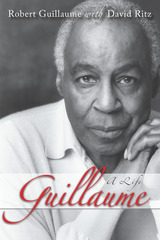 Guillaume: A Life
Robert Guillaume & David Ritz
University of Missouri Press, 2002 Guillaume: A Life is the autobiography of esteemed Broadway, Hollywood, and television star Robert Guillaume. Ten months after suffering a stroke, Guillaume—perhaps best known as television’s Benson—began this autobiography with award-winning author and collaborator David Ritz.
The book goes beyond the recounting of a long and successful career to examine the forces that shaped the man: family, religion, race, and class. Startlingly candid and disarmingly self-aware, Guillaume seeks to know and understand himself, his treatment of the women in his life, and the choices he made along the way. He pursues the truth, however painful it may be, says Ritz, guided by two questions, “Who the hell am I?” and “What made me do what I did?”
Born in St. Louis in 1927 to a young, abused, unstable mother, and reared by a strong, hardworking grandmother, Robert Guillaume managed to move from the poverty and adversity of his youth to a rich, full career as an actor and a singer. Fierce determination and sharp focus enabled this man born to hardship and racial discrimination to study, learn, cultivate his natural talents, and succeed at the performance career he pursued with a vengeance. Guillaume first performed in the strict Catholic schools and churches to which his grandmother, who understood that education would be the key to any success he might achieve, sent him. There his love of classical music was nurtured, and he was encouraged to perform.
From a child longing for his mother’s love to a man unsure of the meaning of love for many of the women in his life, from a young performer struggling to succeed on Broadway and in Hollywood to a grief-stricken father watching his son die of AIDS, Robert Guillaume tells what it was like to realize celebrity and what he sacrificed in the process. Readers will savor the success story of this artist who achieved great recognition and fame, but who never lost sight of his beginnings. Appealing to all audiences, Guillaume is a revealing and poignant autobiography of an extraordinary and distinguished American thespian.
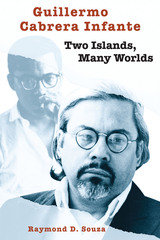 Guillermo Cabrera Infante: Two Islands, Many Worlds
By Raymond D. Souza
University of Texas Press, 1996 A native Cuban who has lived in London since 1966, Guillermo Cabrera Infante is, in every sense, a multilingual and multicultural author. Equally at ease in both Spanish and English, he has distinguished himself with daring and innovative novels, essays, short stories, and film scripts written in both languages. His work has won major literary awards in France, Italy, and Spain, as well as a Guggenheim fellowship in the United States. This biography is the first comprehensive exploration of the life and works of Guillermo Cabrera Infante. Drawing on wide-ranging interviews with the author and his family and friends, as well as extensive study of both published and unpublished works, Raymond D. Souza creates an intimate portrait of Cabrera Infante and the cultural and political milieus that shaped his writing, including Three Trapped Tigers (Tres tristes tigres), View of Dawn in the Tropics (Vista del amanecer en el trópico), Infante's Inferno (La Habana para un Infante difunto), Holy Smoke, A Twentieth Century Job (Un oficio del siglo XX), Writes of Passage (Así en la paz como en la guerra), and Mea Cuba.
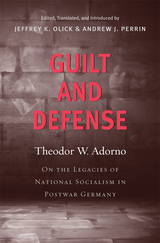 Guilt and Defense: On the Legacies of National Socialism in Postwar Germany
Theodor W. AdornoEdited, translated, and introduced by Jeffrey K. Olick and Andrew J. Perrin
Harvard University Press, 2010 Beginning in 1949, Theodor W. Adorno and other members of the reconstituted Frankfurt Institute for Social Research undertook a massive empirical study of German opinions about the legacies of the Nazis, applying and modifying techniques they had learned during their U.S. exile. They published their results in 1955 as a research monograph edited by Friedrich Pollock. The study's qualitative results are published here for the first time in English as Guilt and Defense, a psychoanalytically informed analysis of the rhetorical and conceptual mechanisms with which postwar Germans most often denied responsibility for the Nazi past. In their editorial introduction, Jeffrey K. Olick and Andrew J. Perrin show how Adorno’s famous 1959 essay “The Meaning of Working through the Past,” is comprehensible only as a conclusion to his long-standing research and as a reaction to the debate it stirred; this volume also includes a critique by psychologist Peter R. Hoffstater as well as Adorno’s rejoinder. This previously little-known debate provides important new perspectives on postwar German political culture, on the dynamics of collective memory, and on Adorno’s intellectual legacies, which have contributed more to empirical social research than has been acknowledged. A companion volume, Group Experiment and Other Writings, will present the first book-length English translation of the Frankfurt Group's conceptual, methodological, and theoretical innovations in public opinion research.
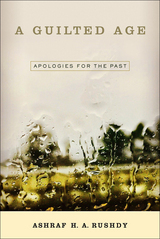 A Guilted Age: Apologies for the Past
Ashraf A. H. Rushdy
Temple University Press, 2015 Public apologies have become increasingly common scenes and representative moments in what appears to be a global process of forgiveness. The apology-forgiveness dynamic is familiar to all of us, but what do these rituals of atonement mean when they are applied to political and historical events? In his timely, topical, and incisive book A Guilted Age, Ashraf Rushdy argues that the proliferation of apologies by politicians, nations, and churches for past events—such as American slavery or the Holocaust—can be understood as a historical phenomenon. In our post–World War II world, Rushdy claims that we live in a “guilted age.” A Guilted Age identifies the two major forms of apologies—political and historical—and Rushdy defines the dynamics and strategies of each, showing how the evolution of one led to the other. In doing so, he reveals what apology and forgiveness do to the past events they respectively apologize for and forgive—and what happens when they fail.
The Guiltless
Hermann Broch
Northwestern University Press, 2001 Murder, lust, shame, hypocrisy, and suicide are at the center of The Guiltless, Hermann Broch's postwar novel about the disintegration of European society in the decades preceding the Second World War. Broch's characters--apathetic, cruel, or indolent--are trapped in their indifference, prisoners of a "wakeful somnolence." They may mention the "imbecile Hitler," yet they prefer sex or a nap to any social action. Broch thought such ethical perversity and political apathy paved the way for Nazism and hoped that by revealing Germany's underlying guilt he could purge indifference from his own and future generations. In The Guiltless, Broch captures how ennui--a very human failing--evolves into something dehumanizing and dangerous.
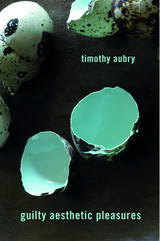 Guilty Aesthetic Pleasures
Timothy Aubry
Harvard University Press, 2018 In the wake of radical social movements in the 1960s and 1970s, literary studies’ embrace of politics entailed a widespread rejection of aesthetic considerations. For scholars invested in literature’s role in supporting or challenging dominant ideologies, appreciating literature’s formal beauty seemed frivolous and irresponsible, even complicit with the iniquities of the social order. This suspicion of aesthetics became the default posture within literary scholarship, a means of establishing the rigor of one’s thought and the purity of one’s political commitments. Yet as Timothy Aubry explains, aesthetic pleasure never fully disappeared from the academy. It simply went underground.
From New Criticism to the digital humanities, Aubry recasts aesthetics as the complicated, morally ambiguous, embattled yet resilient protagonist in late twentieth-century and early twenty-first–century literary studies. He argues that academic critics never stopped asserting preferences for certain texts, rhetorical strategies, or intellectual responses. Rather than serving as the enemy of formalism and aesthetics, political criticism enabled scholars to promote heightened experiences of perceptual acuity and complexity while adjudicating which formal strategies are best designed to bolster these experiences. Political criticism, in other words, did not eradicate but served covertly to nurture reading practices aimed at achieving aesthetic satisfaction.
Guilty Aesthetic Pleasures shows that literary studies’ break with midcentury formalism was not as clean as it once appeared. Today, when so many scholars are advocating renewed attention to textual surfaces and aesthetic experiences, Aubry’s work illuminates the surprisingly vast common ground between the formalists and the schools of criticism that succeeded them.
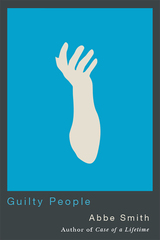 Guilty People
Abbe Smith
Rutgers University Press, 2020 Criminal defense attorneys protect the innocent and guilty alike, but, the majority of criminal defendants are guilty. This is as it should be in a free society. Yet there are many different types of crime and degrees of guilt, and the defense must navigate through a complex criminal justice system that is not always equipped to recognize nuances.
In Guilty People, law professor and longtime criminal defense attorney Abbe Smith gives us a thoughtful and honest look at guilty individuals on trial. Each chapter tells compelling stories about real cases she handled; some of her clients were guilty of only petty crimes and misdemeanors, while others committed offenses as grave as rape and murder. In the process, she answers the question that every defense attorney is routinely asked: How can you represent these people?
Smith’s answer also tackles seldom-addressed but equally important questions such as: Who are the people filling our nation’s jails and prisons? Are they as dangerous and depraved as they are usually portrayed? How did they get caught up in the system? And what happens to them there?
This book challenges the assumption that the guilty are a separate species, unworthy of humane treatment. It is dedicated to guilty people—every single one of us.
 Guilty Pleasures: Feminist Camp from Mae West to Madonna
Pamela Robertson
Duke University Press, 1996 “Camp,” Mae West told Playboy, “is the kinda comedy where they imitate me.” But what was West doing, if not camp itself? Guilty Pleasures puts women back into the history of camp, a story long confined to gay male practice. Emphasizing the distinctive roles women have played as producers and consumers of camp, Pamela Robertson links her subject to feminist discussions of gender parody, performance, and spectatorship. Her book offers a heady tour of social and cultural criticism at its most interesting, and American culture at its most flamboyant.
Robertson grounds her theoretical discussion of female performance and spectatorship in detailed studies of figures such as Mae West, Joan Crawford, and Madonna. She locates these figures in turn within a tradition of feminist camp—a female form of aestheticism related to masquerade and rooted in burlesque, parallel to but different from gay male camp. Through analyses of films from Gold Diggers of 1933 to Johnny Guitar, as well as video and television, Robertson shows how the gold digger is to feminist camp what the dandy is to gay male camp—its original personification and defining voice. Set against a backdrop of social history, her analysis demonstrates that feminist camp flourishes during periods of antifeminist backlash in America, and that it reflects a working-class sensibility particularly attuned to changing attitudes toward women’s work and sexuality.
Appealing to a wide range of scholars spanning the fields of film and mass culture, feminism, gay/lesbian/queer studies, and cultural studies, Guilty Pleasures will also attract an audience of general readers interested in camp and popular culture.
The Guinea Pigs
Ludvik Vaculik
Northwestern University Press, 1986 The Guinea Pigs is a chilling fable about dehumanization and alienation representing Vaculik's vision of the menace of Soviet domination in the wake of the 1969 invasion. Written in 1970, it is a sweeping condemnation of totalitarianism, embedded in a rich, imaginative, highly experimental narrative. In the words of the New York Review of Books it is "one of the major works of literature produced in postwar Europe."
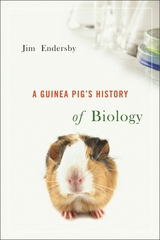 A Guinea Pig’s History of Biology
Jim Endersby
Harvard University Press, 2007 "Endless forms most beautiful and most wonderful have been, and are being, evolved," Darwin famously concluded The Origin of Species, and for confirmation we look to...the guinea pig? How this curious creature and others as humble (and as fast-breeding) have helped unlock the mystery of inheritance is the unlikely story Jim Endersby tells in this book.
Biology today promises everything from better foods or cures for common diseases to the alarming prospect of redesigning life itself. Looking at the organisms that have made all this possible gives us a new way of understanding how we got here--and perhaps of thinking about where we're going. Instead of a history of which great scientists had which great ideas, this story of passionflowers and hawkweeds, of zebra fish and viruses, offers a bird's (or rodent's) eye view of the work that makes science possible.
Mixing the celebrities of genetics, like the fruit fly, with forgotten players such as the evening primrose, the book follows the unfolding history of biological inheritance from Aristotle's search for the "universal, absolute truth of fishiness" to the apparently absurd speculations of eighteenth-century natural philosophers to the spectacular findings of our day--which may prove to be the absurdities of tomorrow.
The result is a quirky, enlightening, and thoroughly engaging perspective on the history of heredity and genetics, tracing the slow, uncertain path--complete with entertaining diversions and dead ends--that led us from the ancient world's understanding of inheritance to modern genetics.
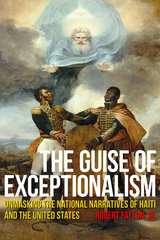 The Guise of Exceptionalism: Unmasking the National Narratives of Haiti and the United States
Robert Fatton
Rutgers University Press, 2021 The Guise of Exceptionalism compares the historical origins of Haitian and American exceptionalisms. It also traces how exceptionalism as a narrative of uniqueness has shaped relations between the two countries from their early days of independence through the contemporary period. Exceptionalism is at the core of every national founding narrative. It allows countries to purge history of injurious stains, and embellish it with mythical innocence and claims of distinction. Exceptionalism also builds the bonds of solidarity that forge an imagined national fellowship of the chosen, but it excludes those deemed unfit for membership because of their race, ethnicity, gender, or class. Exceptionalism, however, is not frozen. As a social invention, it changes over time, but always within the parameters of its original principles. Our capacity to reinvent it is dependent on the degree of hegemony achieved by the ruling class, and if this class has the infrastructural power to gradually co-opt and include €the groups it had once excluded.
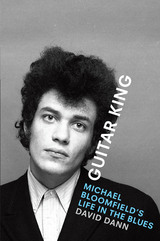 Guitar King: Michael Bloomfield's Life in the Blues
By David Dann
University of Texas Press, 2021 Named one of the world’s great blues-rock guitarists by Rolling Stone, Mike Bloomfield (1943–1981) remains beloved by fans forty years after his untimely death. Taking readers backstage, onstage, and into the recording studio with this legendary virtuoso, David Dann tells the riveting stories behind Bloomfield’s work in the seminal Paul Butterfield Blues Band and the mesmerizing Electric Flag, as well as on the Super Session album with Al Kooper and Stephen Stills, Bob Dylan’s Highway 61 Revisited, and soundtrack work with Peter Fonda and Jack Nicholson. In vivid chapters drawn from meticulous research, including more than seventy interviews with the musician’s friends, relatives, and band members, music historian David Dann brings to life Bloomfield’s worlds, from his comfortable upbringing in a Jewish family on Chicago’s North Shore to the gritty taverns and raucous nightclubs where this self-taught guitarist helped transform the sound of contemporary blues and rock music. With scenes that are as electrifying as Bloomfield’s solos, this is the story of a life lived at full volume.
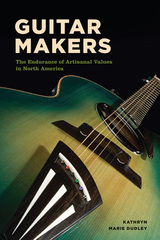 Guitar Makers: The Endurance of Artisanal Values in North America
Kathryn
Marie Dudley
University of Chicago Press, 2014 It whispers, it sings, it rocks, and it howls. It expresses the voice of the folk—the open road, freedom, protest and rebellion, youth and love. It is the acoustic guitar. And over the last five decades it has become a quintessential American icon. Because this musical instrument is significant to so many—in ways that are emotional, cultural, and economic—guitar making has experienced a renaissance in North America, both as a popular hobby and, for some, a way of life.
In Guitar Makers, Kathryn Marie Dudley introduces us to builders of artisanal guitars, their place in the art world, and the specialized knowledge they’ve developed. Drawing on in-depth interviews with members of the lutherie community, she finds that guitar making is a social movement with political implications. Guitars are not simply made—they are born. Artisans listen to their wood, respond to its liveliness, and strive to endow each instrument with an unforgettable tone. Although professional luthiers work within a market society, Dudley observes that their overriding sentiment is passion and love of the craft. Guitar makers are not aiming for quick turnover or the low-cost reproduction of commodities but the creation of singular instruments with unique qualities, and face-to-face transactions between makers, buyers, and dealers are commonplace.
In an era when technological change has pushed skilled artisanship to the margins of the global economy, and in the midst of a capitalist system that places a premium on ever faster and more efficient modes of commerce, Dudley shows us how artisanal guitar makers have carved out a unique world that operates on alternative, more humane, and ecologically sustainable terms.
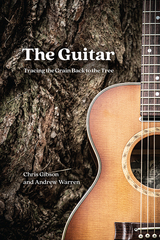 The Guitar: Tracing the Grain Back to the Tree
Chris Gibson and Andrew Warren
University of Chicago Press, 2021 Guitars inspire cult-like devotion: an aficionado can tell you precisely when and where their favorite instrument was made, the wood it is made from, and that wood’s unique effect on the instrument’s sound. In The Guitar, Chris Gibson and Andrew Warren follow that fascination around the globe as they trace guitars all the way back to the tree. The authors take us to guitar factories, port cities, log booms, remote sawmills, Indigenous lands, and distant rainforests, on a quest for behind-the-scenes stories and insights into how guitars are made, where the much-cherished guitar timbers ultimately come from, and the people and skills that craft those timbers along the way. Gibson and Warren interview hundreds of people to give us a first-hand account of the ins and outs of production methods, timber milling, and forest custodianship in diverse corners of the world, including the Pacific Northwest, Madagascar, Spain, Brazil, Germany, Japan, China, Hawaii, and Australia. They unlock surprising insights into longer arcs of world history: on the human exploitation of nature, colonialism, industrial capitalism, cultural tensions, and seismic upheavals. But the authors also strike a hopeful note, offering a parable of wider resonance—of the incredible but underappreciated skill and care that goes into growing forests and felling trees, milling timber, and making enchanting musical instruments, set against the human tendency to reform our use (and abuse) of natural resources only when it may be too late. The Guitar promises to resonate with anyone who has ever fallen in love with a guitar.
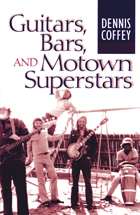 Guitars, Bars, and Motown Superstars
Dennis Coffey
University of Michigan Press, 2009 "Guitarist Dennis Coffey was in that elite band of musicians who helped to create the Motown Sound."
---Edwin Starr
"There can never be enough stories told from the vantage point of Motown's fabled Snake Pit, from one of the journeyman musicians working behind the scenes. Guitars, Bars, and Motown Superstars also shows just how frenetic and creative the Detroit music scene was in the '60s and '70s. But it's Dennis Coffey's personal story that's most gripping: the journey from Motown, to Billboard's Top Ten, to working the line at Chevrolet."
---Susan Whitall, Detroit News; author of Women of Motown
Under Berry Gordy, Motown was a place where studio musicians usually stood in the shadows, unlike the solo stars whose names appeared on the albums. Gordy held a tight rein on his musicians, forbidding them from playing for other record companies and denying them credit on his records.
In Guitars, Bars, and Motown Superstars, author and guitarist Dennis Coffey tells how he slipped Gordy's draconian rules and went on to success as both a Motown musician and a million-selling solo artist. He offers a fascinating backstage look at the Detroit, L.A., and New York music scenes in the '60s and '70s, with side trips to the smoky clubs and funky studios where the Motown sound was born.
Coffey is credited with creating a lot of that sound, including the famous guitar intro to the Temptations' classic "Cloud Nine." He played on hundreds of Motown albums, and introduced such innovations as the Wah Wah pedal into the Motown recording studio.
Guitars, Bars, and Motown Superstars is an entertaining and amusing memoir of one of the most dynamic and influential periods in contemporary pop culture, and a unique insight into the ups and downs of the studio guitar-for-hire. It's also a look at the dizzying rags-to-riches-and-back-again career of a rock musician who went from million-seller with a house in the Hollywood Hills, and ultimately back to his roots in the Detroit area. A must for fans of Motown, rock, and you-are-there pop-culture history.
From "rock & roll kid" to honorary member of Motown's elite rhythm section the Funk Brothers, Dennis Coffey was one of Detroit's most in-demand session guitarists. After leaving Motown, Coffey became a regular at Hitsville USA, playing on records for Marvin Gaye, the Supremes, Stevie Wonder, Gladys Knight, and Junior Walker. Most recently he appeared in the documentary Standing in the Shadows of Motown.
 The Gulf of California: Biodiversity and Conservation
Richard C. Brusca
University of Arizona Press, 2010 Few places in the world can claim such a diversity of species as the Gulf of California (Sea of Cortez), with its 6,000 recorded animal species estimated to be half the number actually living in its waters. So rich are the Gulf's water that over a half-million tons of seafood are taken from them annually—and this figure does not count the wasted by-catch, which would triple or quadruple that tonnage. This timely book provides a benchmark for understanding the Gulf's extraordinary diversity, how it is threatened, and in what ways it is—or should be—protected. In spite of its dazzling richness, most of the Gulf's coastline now harbors but a pale shadow of the diversity that existed just a half-century ago. Recommendations based on sound, careful science must guide Mexico in moving forward to protect the Gulf of California. This edited volume contains contributions by twenty-four Gulf of California experts, from both sides of the U.S.-Mexico border. From the origins of the Gulf to its physical and chemical characteristics, from urgently needed conservation alternatives for fisheries and the entire Gulf ecosystem to information about its invertebrates, fishes, cetaceans, and sea turtles, this thought-provoking book provides new insights and clear paths to achieve sustainable use solidly based on robust science. The interdisciplinary, international cooperation involved in creating this much-needed collection provides a model for achieving success in answering critically important questions about a precious but rapidly disappearing ecological treasure.
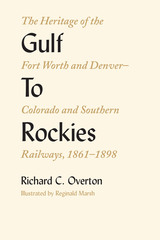 Gulf To Rockies: The Heritage of the Fort Worth and Denver–Colorado and Southern Railways, 1861–1898
By Richard C. Overton
University of Texas Press, 1953 Gulf to Rockies is a chapter in the business and economic history of the American West and the story of two of the most colorful railroad builders of the nineteenth century. Throughout the 1860s the mineral treasures of Colorado were virtually inaccessible for lack of railroads. Even after a hectic decade of building in the 1870s, the state faced a new sort of isolation: every railroad crossing her borders was controlled by the Union Pacific or the Santa Fe. As a result, the Rocky Mountain region could not hope to compete with the Midwest for the business of the Atlantic seaboard. To remedy this situation, John Evans, former governor of Colorado, organized in 1881 a railroad to run southward from Denver as the first link in a cheap rail-water route via the Gulf of Mexico to the East. Meanwhile ambitious Fort Worth citizens had incorporated the Fort Worth and Denver City in 1873. Not a rail was laid on either road, however, until General Grenville M. Dodge, famed builder of the Union Pacific and the Texas Pacific, took up the Texas project and joined forces with Evans to create the Gulf-to-Rockies route. It took seven years for these men and their associates to mobilize funds and complete the Fort Worth–Denver line, and another decade to establish the system’s independence and solve its financial problems in the face of drought, depression, and intense competition. Gulf to Rockies was written under special agreements with Northwestern University and the Chicago, Burlington & Quincy Railroad, whereby the university relieved Mr. Overton of a part of his duties in order that he might have time for research and writing and the railroad undertook to bear the cost of the research. The Burlington also permitted him free access to all company records and granted him unrestricted freedom to publish his findings.
Gum Arabic: The Golden Tears of the Acacia Tree
Dorrit van Dalen
Amsterdam University Press, 2019 Gum Arabic has been seen as a symbol of the “noble Orient” and later as a symbol of trouble. It is the hardened sap of varieties of acacia trees which grow exclusively in the Sahel, an area stretching across the African continent just south of the Sahara. From the time of the Crusades, when Europeans purchased it in Arab countries, it has played an ever-growing role in the global economy. It is now a common ingredient in foods, sodas, and cosmetics. Combining cultural history with travel writing, Dorrit van Dalen follows the fascinating history and shifting meanings assigned to gum Arabic from Shakespeare to Bin Laden and from the Industrial Revolution to a veteran of a recent coup d’état in Chad. She shows that both Western and African civilisations would not be the same without these tears of the acacia.
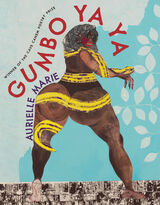 Gumbo Ya Ya: Poems
Aurielle Marie
University of Pittsburgh Press, 2021 Winner, 2022 Lambda Literary Award for Bisexual Poetry
Winner, 2022 Georgia Author of the Year (Poetry)
Finalist, 2023 Kate Tufts Discovery Award
Gumbo Ya Ya, Aurielle Marie’s stunning debut, is a cauldron of hearty poems exploring race, gender, desire, and violence in the lives of Black gxrls, soaring against the backdrop of a contemporary South. These poems are loud, risky, and unapologetically rooted in the glory of Black gxrlhood. The collection opens with a heartrending indictment of injustice. What follows is a striking reimagination of the world, one where no Black gxrl dies “by the barrel of the law” or “for loving another Black gxrl.” Part familial archival, part map of Black resistance, Gumbo Ya Ya catalogs the wide gamut of Black life at its intersections, with punching cultural commentary and a poetic voice that holds tenderness and sharpness in tandem. It asks us to chew upon both the rich meat and the tough gristle, and in doing so we walk away more whole than we began and thoroughly satisfied.
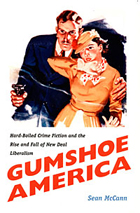 Gumshoe America: Hard-Boiled Crime Fiction and the Rise and Fall of New Deal Liberalism
Sean McCann
Duke University Press, 2000 In Gumshoe America Sean McCann offers a bold new account of the hard-boiled crime story and its literary and political significance. Illuminating a previously unnoticed set of concerns at the heart of the fiction, he contends that mid-twentieth-century American crime writers used the genre to confront and wrestle with many of the paradoxes and disappointments of New Deal liberalism. For these authors, the same contradictions inherent in liberal democracy were present within the changing literary marketplace of the mid-twentieth-century United States: the competing claims of the elite versus the popular, the demands of market capitalism versus conceptions of quality, and the individual versus a homogenized society.
Gumshoe America traces the way those problems surfaced in hard-boiled crime
fiction from the1920s through the 1960s. Beginning by using a forum on the KKK in the pulp magazine Black Mask to describe both the economic and political culture of pulp fiction in the early twenties, McCann locates the origins of the hard-boiled crime story in the genre’s conflict with the racist antiliberalism prominent at the time. Turning his focus to Dashiell Hammett’s career, McCann shows how Hammett’s writings in the late 1920s and early 1930s moved detective fiction away from its founding fables of social compact to the cultural alienation triggered by a burgeoning administrative state. He then examines how Raymond Chandler’s fiction, unlike Hammett’s, idealized sentimental fraternity, echoing the communitarian appeals of the late New Deal. Two of the first crime writers to publish original fiction in paperback—Jim Thompson and Charles Willeford—are examined next in juxtaposition to the popularity enjoyed by their contemporaries Mickey Spillane and Ross Macdonald. The stories of the former two, claims McCann, portray the decline of the New Deal and the emergence of the rights-based liberalism of the postwar years and reveal new attitudes toward government: individual alienation, frustration with bureaucratic institutions, and dissatisfaction with the growing vision of America as a meritocracy. Before concluding, McCann turns to the work of Chester Himes, who, in producing revolutionary hard-boiled novels, used the genre to explore the changing political significance of race that accompanied the rise of the Civil Rights movement in the late 1950s and the 1960s.
Combining a striking reinterpretation of the hard-boiled crime story with a fresh view of the political complications and cultural legacies of the New Deal, Gumshoe America will interest students and fans of the genre, and scholars of American history, culture, and government.
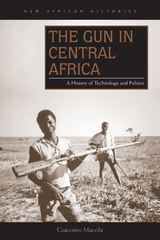 The Gun in Central Africa: A History of Technology and Politics
Giacomo Macola
Ohio University Press, 2016 Why did some central African peoples embrace gun technology in the nineteenth century, and others turn their backs on it? In answering this question, The Gun in Central Africa offers a thorough reassessment of the history of firearms in central Africa. Marrying the insights of Africanist historiography with those of consumption and science and technology studies, Giacomo Macola approaches the subject from a culturally sensitive perspective that encompasses both the practical and the symbolic attributes of firearms. Informed by the view that the power of objects extends beyond their immediate service functions, The Gun in Central Africa presents Africans as agents of technological re-innovation who understood guns in terms of their changing social structures and political interests. By placing firearms at the heart of the analysis, this volume casts new light on processes of state formation and military revolution in the era of the long-distance trade, the workings of central African gender identities and honor cultures, and the politics of the colonial encounter.
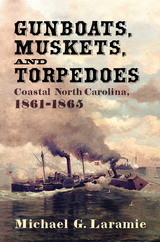 Gunboats, Muskets, and Torpedoes: Coastal North Carolina, 1861–1865
Michael G. Laramie
Westholme Publishing, 2020 The Clash of Arms and Technology for a Critical Region that Lasted the Entire American Civil War From the first shots at Cape Hatteras in the summer of 1861 to the fall of Fort Fisher in early 1865, the contest for coastal North Carolina during the American Civil War was crucial to the Union victory. With a clear naval superiority over the South, the North conducted blockading and amphibious operations from Virginia to Texas, including the three-hundred-mile seacoast of North Carolina. With its Pamlico and Albemarle Sounds—fed by navigable rivers that reached deep into the interior—and major Confederate port of Wilmington, the Carolina coast was essential for the distribution of foreign goods and supplies to Confederate forces in Virginia and elsewhere. If the Union was able to capture Wilmington or advance on the interior waters, they would cripple the South’s war efforts. In Gunboats, Muskets, and Torpedoes: Coastal North Carolina, 1861–1865, award-winning historian Michael G. Laramie chronicles both the battle over supplying the South by sea as well as the ways this region proved to be a fertile ground for the application of new technologies. With the advent of steam propulsion, the telegraph, rifled cannon, repeating firearms, ironclads, and naval mines, the methods and tactics of the old wooden walls soon fell to those of this first major conflict of the industrial age. Soldiers and sailors could fire farther and faster than ever before. With rail transportation available, marches were no longer weeks but days or even hours, allowing commanders to quickly shift men and materials to meet an oncoming threat or exploit an enemy weakness. Fortifications changed to meet the challenges imposed by improved artillery, while the telegraph stretched the battlefield even further. Yet for all the technological changes, many of which would be harbingers of greater conflicts to come, the real story of this strategic coast is found in the words and actions of the soldiers and sailors who vied for this region for nearly four years. It is here, where the choices made—whether good or bad, misinformed, or not made at all —intersected with logistical hurdles, geography, valor, and fear to shape the conflict; a conflict thatwould ultimately set the postwar nation on track to becoming a modern naval power.
 Gunflint Falling: Blowdown in the Boundary Waters
Cary J. Griffith
University of Minnesota Press, 2023 Stories from survivors of the Boundary Waters Canoe Area Wilderness’s epochal weather disaster
On July 4, 1999, in the Boundary Waters Canoe Area Wilderness (BWCAW), a bizarre confluence of meteorological events resulted in the most damaging blowdown in the region’s history. Originating over the Dakotas, the midsummer windstorm developed amid unusually high heat and water-saturated forests and moved steadily east, bearing down on Fargo, North Dakota, and damaging land as it crossed the Minnesota border. Gunflint Falling tells the story of this devastating storm from the perspectives of those who were on the ground before, during, and after the catastrophic event—from first-time visitors to the north woods to returning paddlers to Forest Service Rangers. The pre-dawn forecasts from the National Weather Service in Duluth for that Sunday of the holiday weekend predicted the day would be “warm and humid. Partly sunny with a thirty percent chance of thunderstorms.” But as the afternoon and evening settled over the Boundary Waters, the first eyewitness accounts began to tell a dramatic and terrifying story. Five friends camping on Lake Polly watched in wonder as the sky turned green and the winds began to whip. They scrambled to pull canoes on shore and secure tarps when a tree snapped and struck one of them in the head, rendering her unconscious. Three women enjoying their last day of a camping trip near the end of the Gunflint Trail took shelter in their tent as winds increased. Water drenched the nylon walls as trees crashed around them, one flattening the tent and pinning a woman beneath its weight. A family vacationing at their cabin dodged falling trees and strained against straight-line winds as they sprinted from the cabin to the safest place they knew: a crawl space underneath it. They watched in awe as trees snapped and toppled, their twisted root balls torn out of the water-logged earth—as they prayed their cabin would hold. By the time the storm began to subside, falling trees had injured approximately sixty people, and most needed to be medevacked to safety. Amazingly, no one died. The historic storm laid down timber that would later blaze in the Ham Lake fire of 2007, ultimately reshaping the region’s forests in ways we have yet to fully understand.
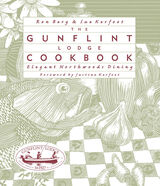 The Gunflint Lodge Cookbook: Elegant Northwoods Dining
Ron Berg
University of Minnesota Press, 1997 Tantalizing cuisine from the renowned restaurant. The Gunflint Lodge is Minnesota’s premier resort because of its pristine wilderness location, warm hospitality, and access to some of the finest fishing in the world. Visitors come from across the country not just for the outdoor activities, but for the food served in its rustic lodge. Whether it’s Opening Day Walleye Fillets with Morel Mushroom Cream Sauce, or Roast Breast of Chicken Pistache with Blackberry Sauce, the Gunflint’s elegant menu, featured recently in Bon Appétit, Men's Journal , and Midwest Living, has won acclaim for inventiveness and sense of northwoods style. The Gunflint Lodge Cookbook is a “reader’s cookbook,” organized by season with introductory essays by chef Ron Berg. Berg delights in adding fresh Minnesota ingredients to his Gunflint Blueberry Pie and his Wild Rice and Smoked Chicken Soup. There is an extensive section on fish cookery, including tips on frying, sautéing, and grilling, and recipes for a selection of breads, batters, and sauces for fish. The Gunflint Lodge Cookbook is more than just recipes, however. Resort owner Sue Kerfoot writes about life at the lodge, feeding hungry visitors, and running a gourmet kitchen far from civilization. Justine Kerfoot’s (Woman of the Boundary Waters) introduction looks at lodge history stretching back to 1927, including filling the icehouse, securing ingredients, and pinch-hitting when the chef quits mid-season. The Gunflint Lodge Cookbook will delight readers with tasty offerings and favorite anecdotes of life on the Gunflint Trail.
 Gunflint: Reflections on the Trail
Justine Kerfoot
University of Minnesota Press, 1991 “The best way to get to know Justine Kerfoot would be to explore a northern forest with her. The next best way to know ‘Just’ is on these pages. Here Justine is at her best, sharing with us her romantic and colorful, and sometimes a tad dangerous, life.” —Les Blacklock Step off the Gunflint Trail, stride to a high point, and savor the view. Only the dark, cool waters and the rugged granite shores interrupt the panorama of the sweeping forest. In this engaging memoir, local pioneer Justine Kerfoot chronicled a year’s worth of experiences and insights while living on the legendary Gunflint Trail. The unique month-by-month chapters of Gunflint and Kerfoot’s rich memories provide a year-round view of a wilderness life that most of us glimpse only in all-too-short weekend interludes. Justine Kerfoot (1906–2001) lived on Minnesota’s remote Gunflint Trail for more than six decades. She wrote of her adventures and travel in a weekly column for the Cook County News-Herald for forty-five years and is the author of Woman of the Boundary Waters (Minnesota, 1994).
Gunning For Ho, 25th Anniversary Edition: Vietnam Stories
H. Lee Barnes
University of Nevada Press, 2026 Celebrating 25 Years of Gunning for Ho: This special edition contains a new preface by the author, revisiting the stories of Vietnam and offering fresh insights and reflections.
In this rich and varied collection of short stories (six stories & one novella), former Green Beret Lee Barnes deals with the war itself and with its aftermath, but his stories focus more on the human aspects of men in armed conflict and families at home than on the violent drama or political aspects of that war.
Gunning For Ho: Vietnam Stories
H. Lee Barnes
University of Nevada Press, 2000 In this rich and varied collection of short stories (six stories & one novella), former Green Beret Lee Barnes deals with the war itself and with its aftermath, but his stories focus more on the human aspects of men in armed conflict and families at home than on the violent drama or political aspects of that war.
Gunpowder Percy
Grace Tiffany
Arizona Center for Medieval and Renaissance Studies, 2000
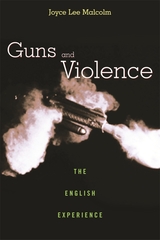 Guns and Violence: The English Experience
Joyce Lee Malcolm
Harvard University Press, 2002 Behind the passionate debate over gun control and armed crime lurk assumptions about the link between guns and violence. Indeed, the belief that more guns in private hands means higher rates of armed crime underlies most modern gun control legislation. But are these assumptions valid?
Investigating the complex and controversial issue of the real relationship between guns and violence, Joyce Lee Malcolm presents an incisive, thoroughly researched historical study of England, whose strict gun laws and low rates of violent crime are often cited as proof that gun control works. To place the private ownership of guns in context, Malcolm offers a wide-ranging examination of English society from the Middle Ages to the late twentieth century, analyzing changing attitudes toward crime and punishment, the impact of war, economic shifts, and contrasting legal codes on violence. She looks at the level of armed crime in England before its modern restrictive gun legislation, the limitations that gun laws have imposed, and whether those measures have succeeded in reducing the rate of armed crime.
Malcolm also offers a revealing comparison of the experience in England experience with that in the modern United States. Today Americans own some 200 million guns and have seen eight consecutive years of declining violence, while the English--prohibited from carrying weapons and limited in their right to self-defense have suffered a dramatic increase in rates of violent crime.
This timely and thought-provoking book takes a crucial step in illuminating the actual relationship between guns and violence in modern society.
Guns at the Forks
Walter O'Meara
University of Pittsburgh Press, 1965 Guns at the Forks is a special reissue commemorating the 250th anniversary of the French and Indian War. In a spirited, intelligent, and informative history, O’Meara tells the story of five successive forts, particularly Fort Duquesne and Fort Pitt, and the dramatic part they played in the war between 1750 and 1760. He describes Washington’s capitulation at Fort Necessity, Braddock’s defeat at the Monongahela, and Forbes’s successful campaign to retake Fort Duquesne. Although most of the action in the book takes place at the strategically important forks of the Ohio, where present-day Pittsburgh stands, O’Meara’s narrative relates the two forts to the larger story of the French and Indian War and elucidates their roles in sparking a global conflict that altered the course of world events and decided the fate of empires.
 Guns, Democracy, and the Insurrectionist Idea
Joshua Horwitz and Casey Anderson
University of Michigan Press, 2009 "Guns, Democracy, and the Insurrectionist Idea recasts the gun debate by showing its importance to the future of democracy and the modern regulatory state. Until now, gun rights advocates had effectively co-opted the language of liberty and democracy and made it their own. This book is an important first step in demonstrating how reasonable gun control is essential to the survival of democracy and ordered liberty."
---Saul Cornell, Ohio State University When gun enthusiasts talk about constitutional liberties guaranteed by the Second Amendment, they are referring to freedom in a general sense, but they also have something more specific in mind---freedom from government oppression. They argue that the only way to keep federal authority in check is to arm individual citizens who can, if necessary, defend themselves from an aggressive government. In the past decade, this view of the proper relationship between government and individual rights and the insistence on a role for private violence in a democracy has been co-opted by the conservative movement. As a result, it has spread beyond extreme militia groups to influence state and national policy. In Guns, Democracy, and the Insurrectionist Idea, Joshua Horwitz and Casey Anderson set the record straight. They challenge the proposition that more guns equal more freedom and expose Insurrectionism as a true threat to freedom in the United States today. Joshua Horwitz received a law degree from George Washington University and is currently a visiting scholar at the Johns Hopkins Bloomberg School of Public Health. Casey Anderson holds a law degree from Georgetown University and is currently a lawyer in private practice in Washington, D.C.
Guns, Drugs, and Development in Colombia
By Jennifer S. Holmes, Sheila Amin Gutiérrez de Piñeres, and Kevin M. Curtin
University of Texas Press, 2009 For decades, Colombia has contended with a variety of highly publicized conflicts, including the rise of paramilitary groups in response to rebel insurgencies of the 1960s, the expansion of an illegal drug industry that has permeated politics and society since the 1970s, and a faltering economy in the 1990s. An unprecedented analysis of these struggles, Guns, Drugs, and Development in Colombia brings together leading scholars from a variety of fields, blending previously unseen quantitative data with historical analysis for an impressively comprehensive assessment. Culminating in an inspiring plan for peace, based on Four Cornerstones of Pacification, this landmark work is sure to spur new calls for change in this corner of Latin America and beyond.
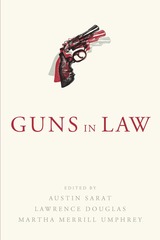 Guns in Law
Austin Sarat
University of Massachusetts Press, 2019 Weapons have been a source of political and legal debate for centuries. Aristotle considered the possession of arms a fundamental source of political power and wrote that tyrants "mistrust the people and deprive them of their arms." Today ownership of weapons—whether handguns or military-grade assault weapons—poses more acute legal problems than ever before. In this volume, the editors' introduction traces the history of gun control in the United States, arguing that until the 1980s courts upheld reasonable gun control measures. The contributors confront urgent questions, among them the usefulness of history as a guide in ongoing struggles over gun regulation, the changing meaning of the Second Amendment, the perspective of law enforcement on guns and gun control law, and individual and relational perspectives on gun rights.
The contributors include the editors and Carl T. Bogus, Jennifer Carlson, Saul Cornell, Darrell A.H. Miller, Laura Beth Nielsen, and Katherine Shaw.
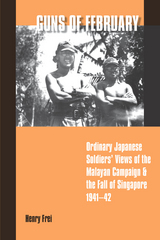 Guns of February: Ordinary Japanese Soldiers' Views of the Malayan Campaign and the Fall of Singapore, 1941-42
Henry Frei
National University of Singapore Press, 1990 Guns of February shows the Fall of Singapore and Japan's 1941 military campaign in Malaya through the eyes of Japanese soldiers who took part, based on interviews, memoirs, war diaries, and other Japanese-language sources. Although an enormous number of books have been published on Japan's wartime advance into Southeast Asia, few books in English make much use of Japanese sources, and they reveal little of what happened on the Japanese side. In the words of the author, the Japanese"'advance by brigade groups', 'outflank the defence', 'sustain many casualties', and remain altogether a largely faceless mass bicycling their way down to Singapore." In Guns of February some of the voices of these soldiers are finally heard, and they tell a fascinating story. A few of them were professional soldiers who served their country with commitment and dedication, but many were conscripts hoping to stay alive, curious and apprehensive about the countries they entered, and moved by the plight of the people whose cities and towns they sometimes destroyed. Many were young men, interested in girls and in the sights and sounds of Southeast Asia, but also missing their families and the familiar world of Japan. It is a picture far removed from the staple view of the remorseless and fanatic Japanese soldier totally devoted to his Emperor and determined to die for his country. In writing this account of the Japanese advance on Singapore, the author attempted to show the universal humanity of the actors concerned.
 Gunshots at the Fiesta: Literature and Politics in Latin America
Maarten van Delden
Vanderbilt University Press, 2009 The product of a unique collaboration between a literary critic (Van Delden) and a political scientist (Grenier), this book looks at the relationship between literature and politics in Latin America, a region where these two domains exist in closer proximity than perhaps anywhere else in the Western world. The apparently seamless blending of literature and politics is reflected in the explicitly political content of much of the continent's writing, as well as in the highly visible political roles played by many Latin American intellectuals.
Yet the authors of this book argue that the relationship between the two realms is much more complex and fraught with tension than is nowadays recognized. In examining these tensions, and in revealing the diverse ways in which literature and politics intersect in the Latin American cultural tradition, Gunshots at the Fiesta offers a lively challenge to the current tendency--especially strong in the U.S. academy--to read Latin American literature through a narrowly political prism.
The authors argue that one can only understand the nature of the dialogue between literature and politics if one begins by recognizing the different logics that operate in these different domains. Using this idea of the different logics of politics and literature as a guiding thread, Van Delden and Grenier offer bold new readings of major authors such as José Martí, Octavio Paz, Carlos Fuentes, Gabriel García Márquez, and Mario Vargas Llosa, as well as compelling interpretations of works by less-frequently-discussed figures such as Claribel Alegría, Marisol Martín del Campo and Víctor Hugo Rascón Banda.
Gunslinger
Edward Dorn
Duke University Press, 1968 Dorn's high-spirited, crazy-quilt, complex anti-epic is a masterful critique of late twentieth-century capitalism and is one of the great comic poems of American literature. Dorn is one of the few political poets in America; this fantasy about a demigod cowboy, a saloon madam, and a talking horse named Claude Levi-Strauss, who travel the Southwest in search of Howard Hughes, has become a minor classic.
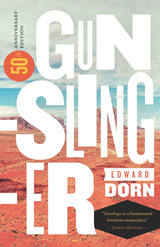 Gunslinger
Edward Dorn
Duke University Press, 1968 Fiftieth Anniversary Edition
"Gunslinger is a fundamental American masterpiece."---Thomas McGuane
This fiftieth anniversary edition commemorates Edward Dorn’s masterpiece, Gunslinger, a comic, anti-epic critique of American capitalism that still resonates today. Set in the American West, the Gunslinger, his talking horse Claude Lévi-Strauss, a saloon madam named Lil, and the narrator called “I” set out in search of the billionaire Howard Hughes. As they travel along the Rio Grande to Truth or Consequences, New Mexico, and finally on to Colorado, they are joined by a whole host of colorful characters: Dr. Jean Flamboyant, Kool Everything, and Taco Desoxin and his partner Tonto Pronto. During their adventures and hijinks, as captured in Dorn’s multilayered, absurd, and postmodern voice, they joke and smoke their way through debates about the meaning of existence. Put simply, Gunslinger is an American classic.
In a new foreword Marjorie Perloff discusses Gunslinger's continued relevance to contemporary politics. This new edition also includes a critical essay by Michael Davidson and Charles Olson’s idiosyncratic “Bibliography on America for Ed Dorn,” which he wrote to provide guidance for Dorn's study of, and writing about, the American West.
|
|
